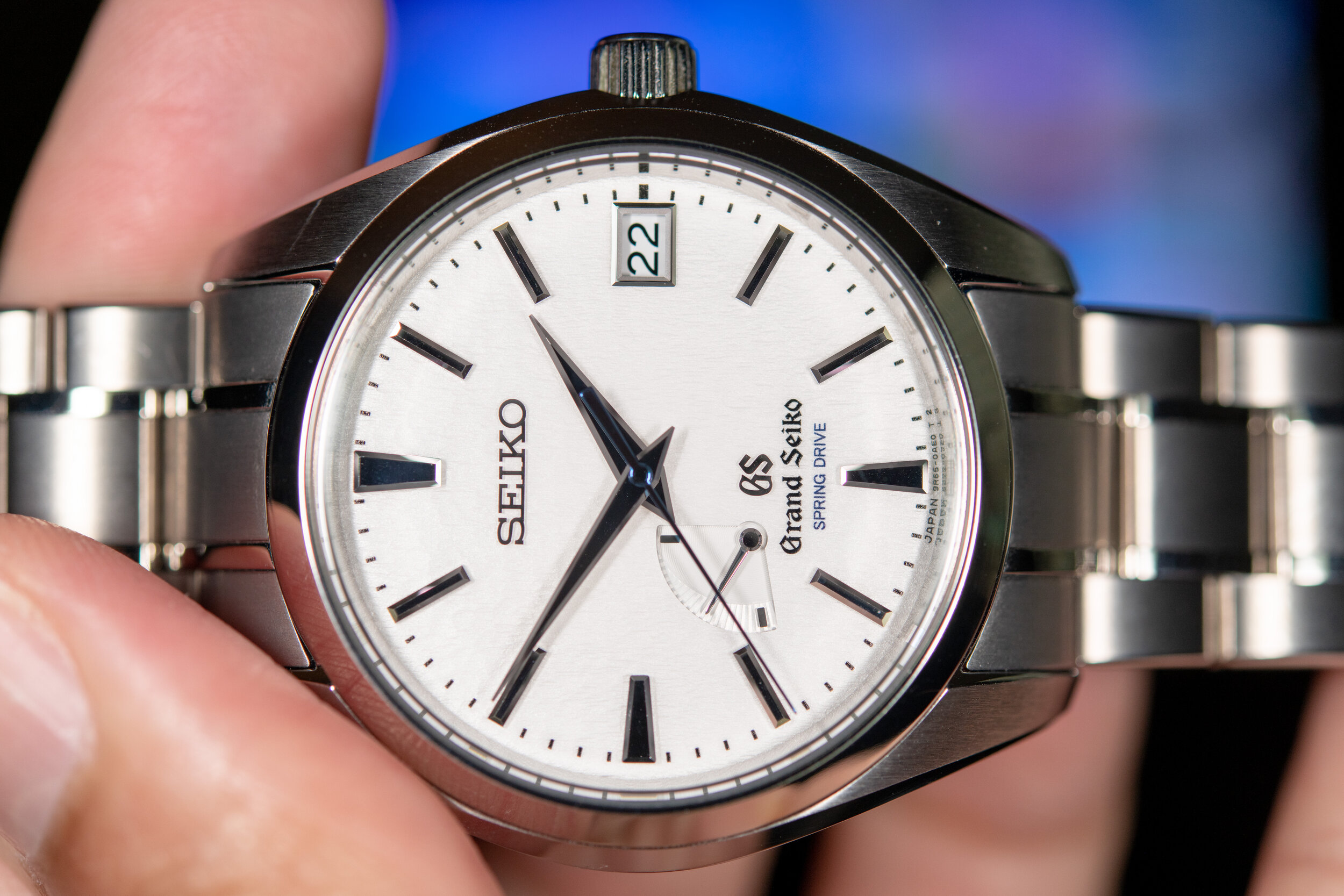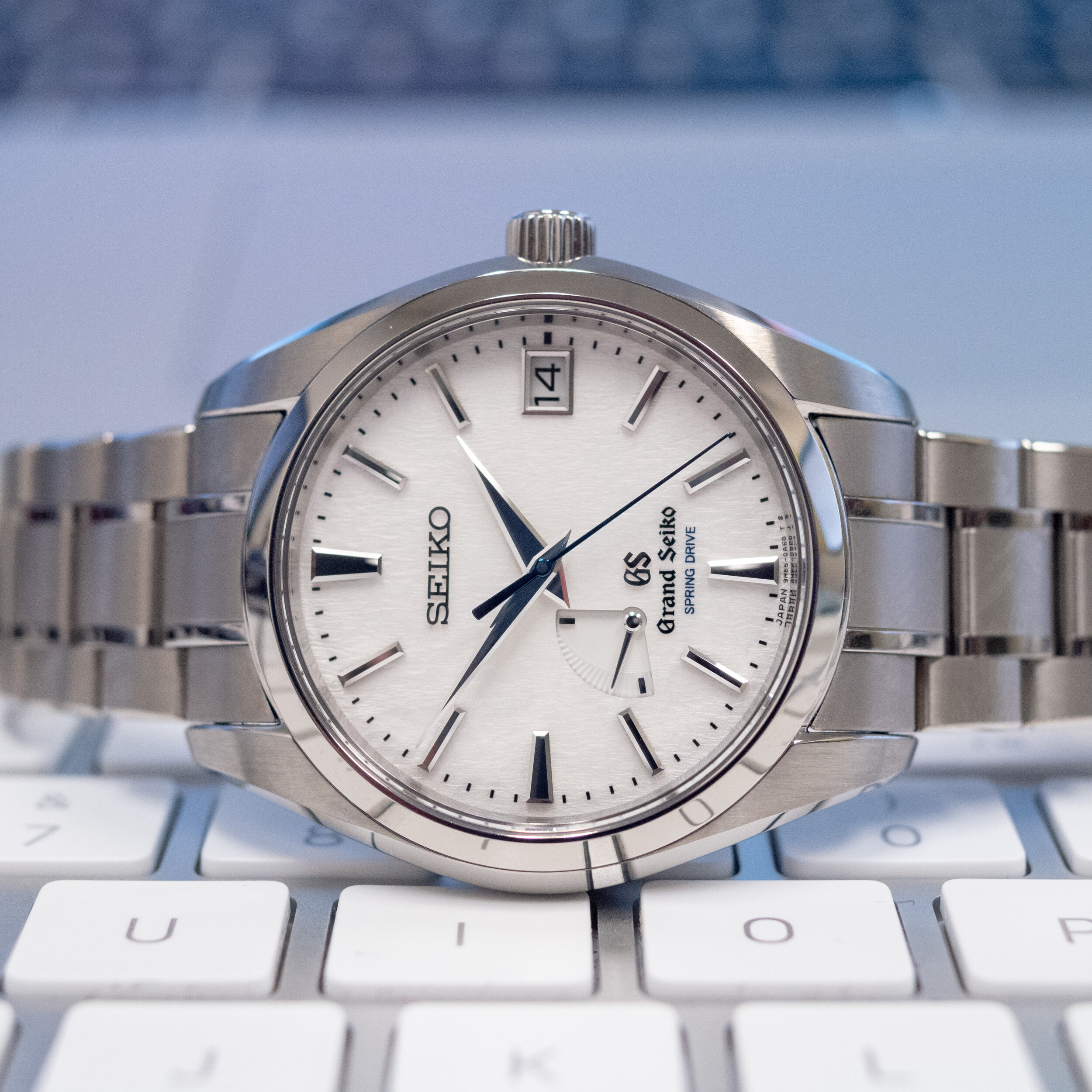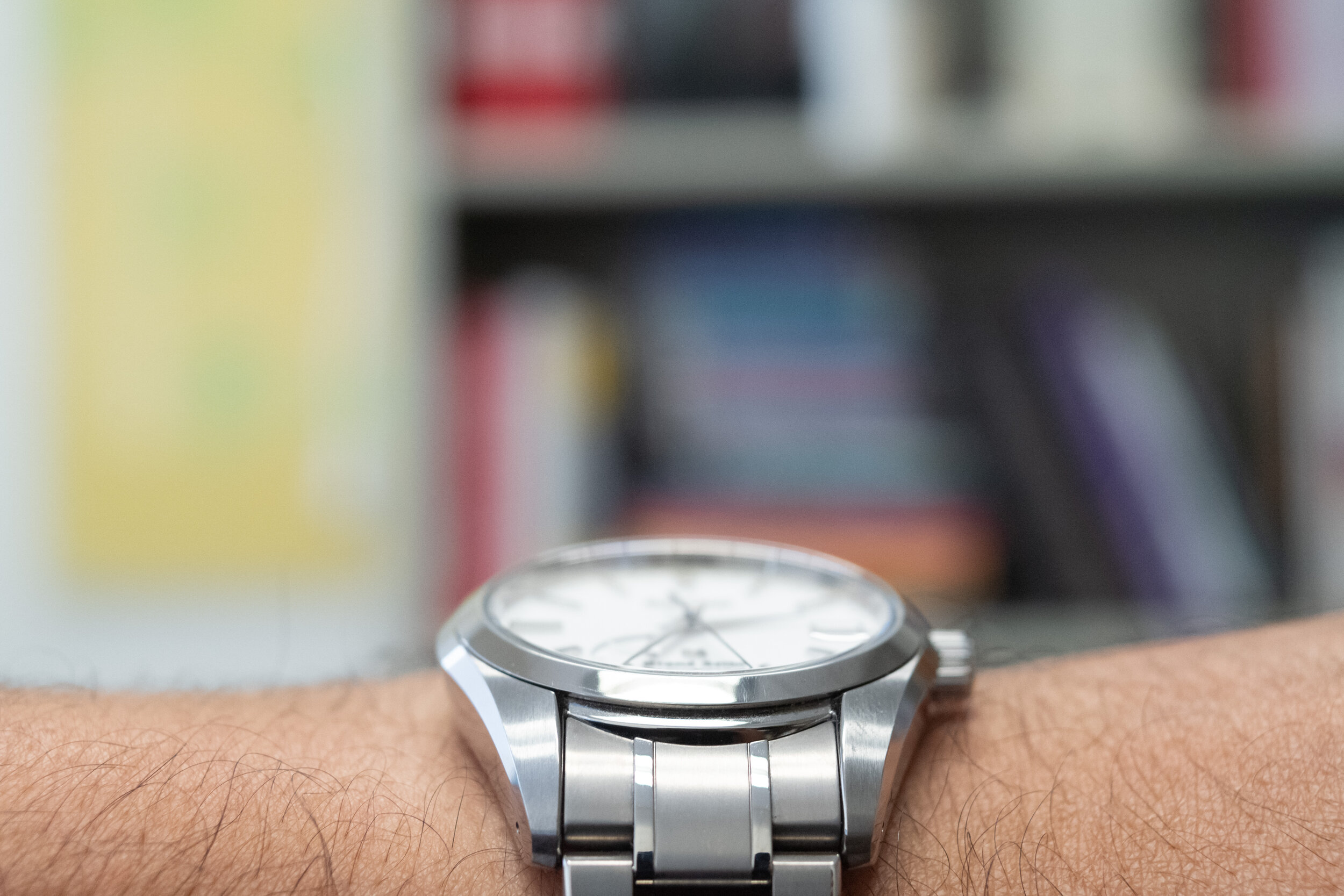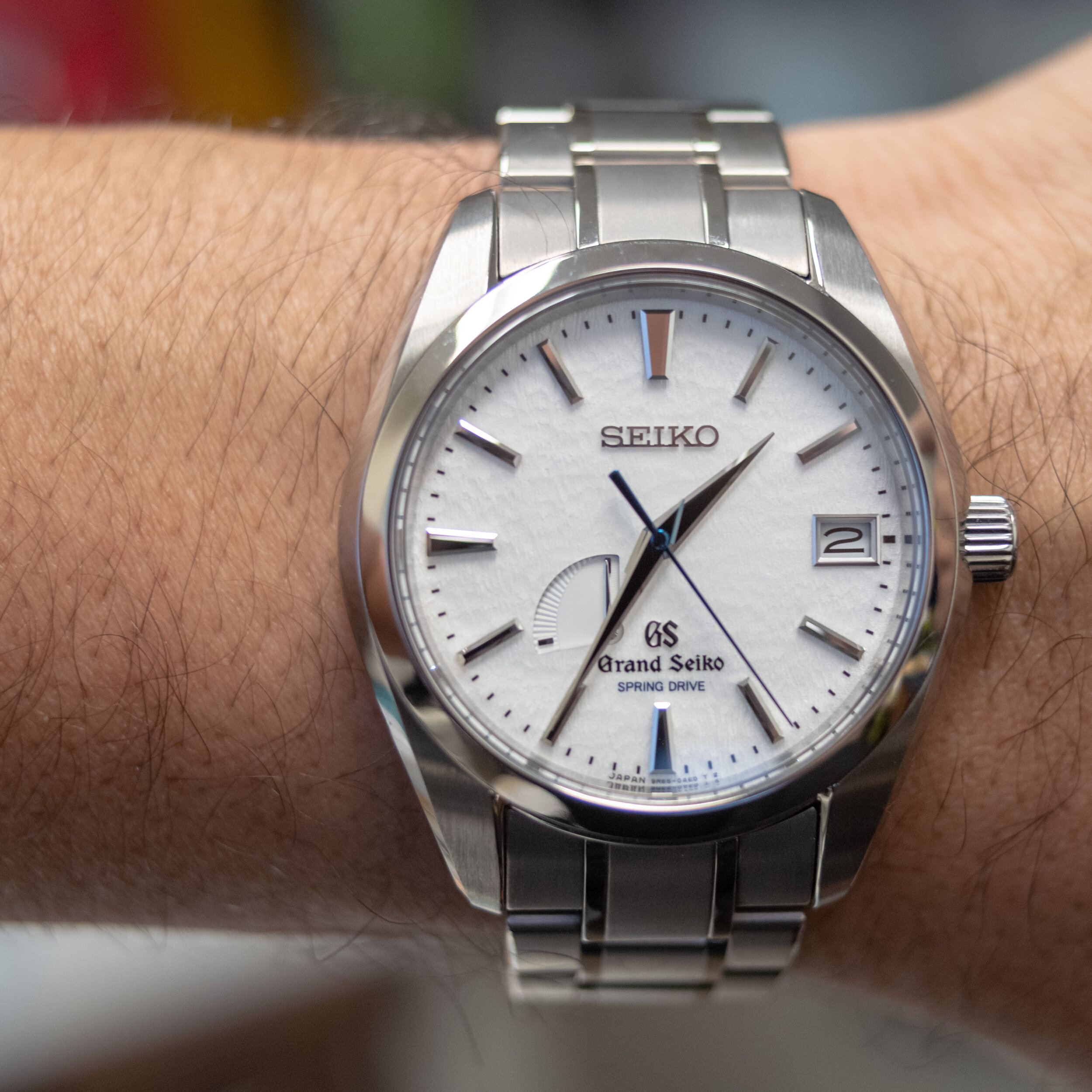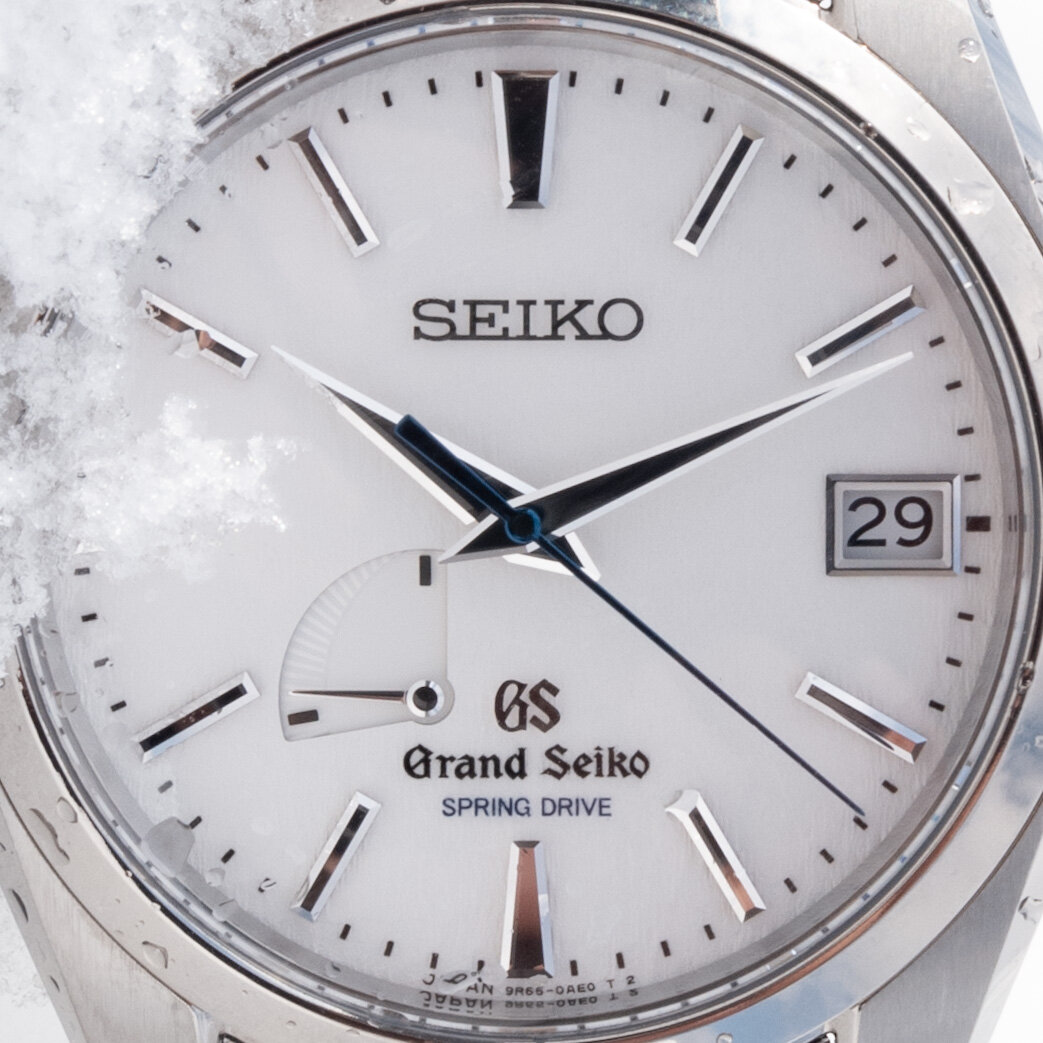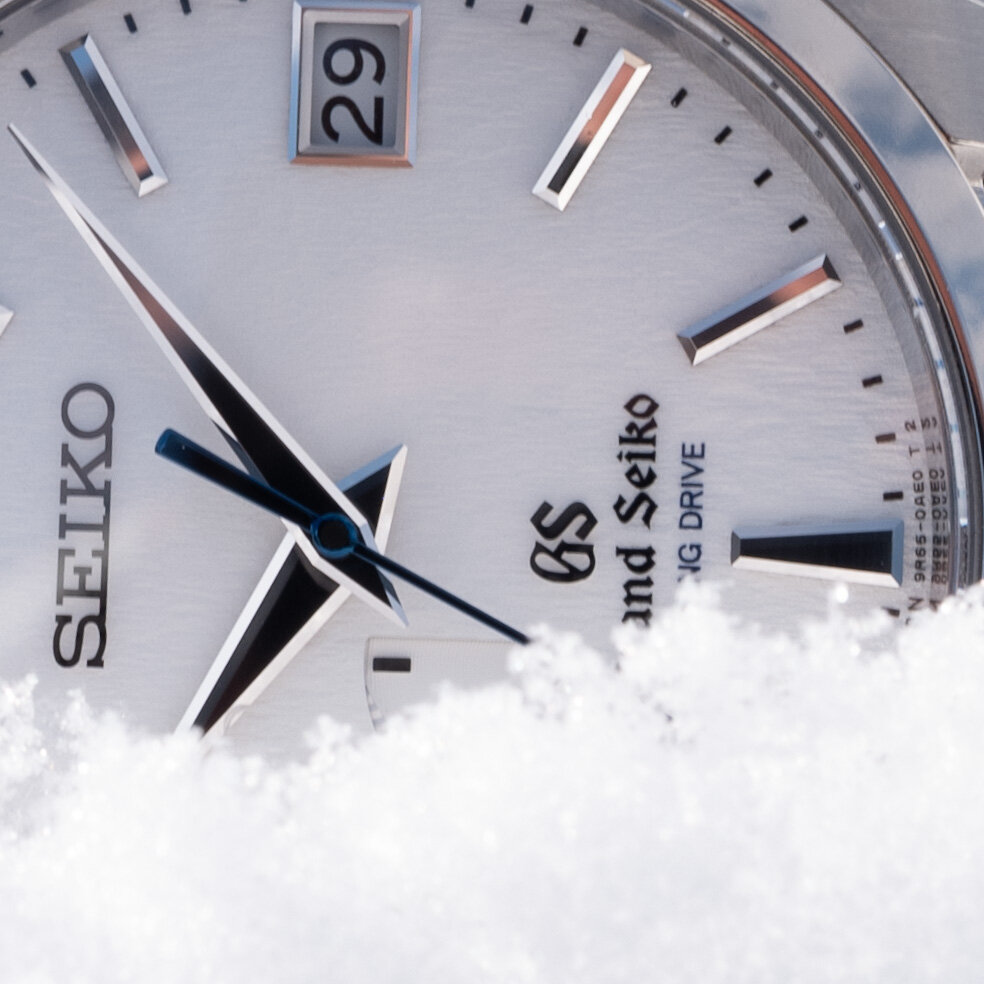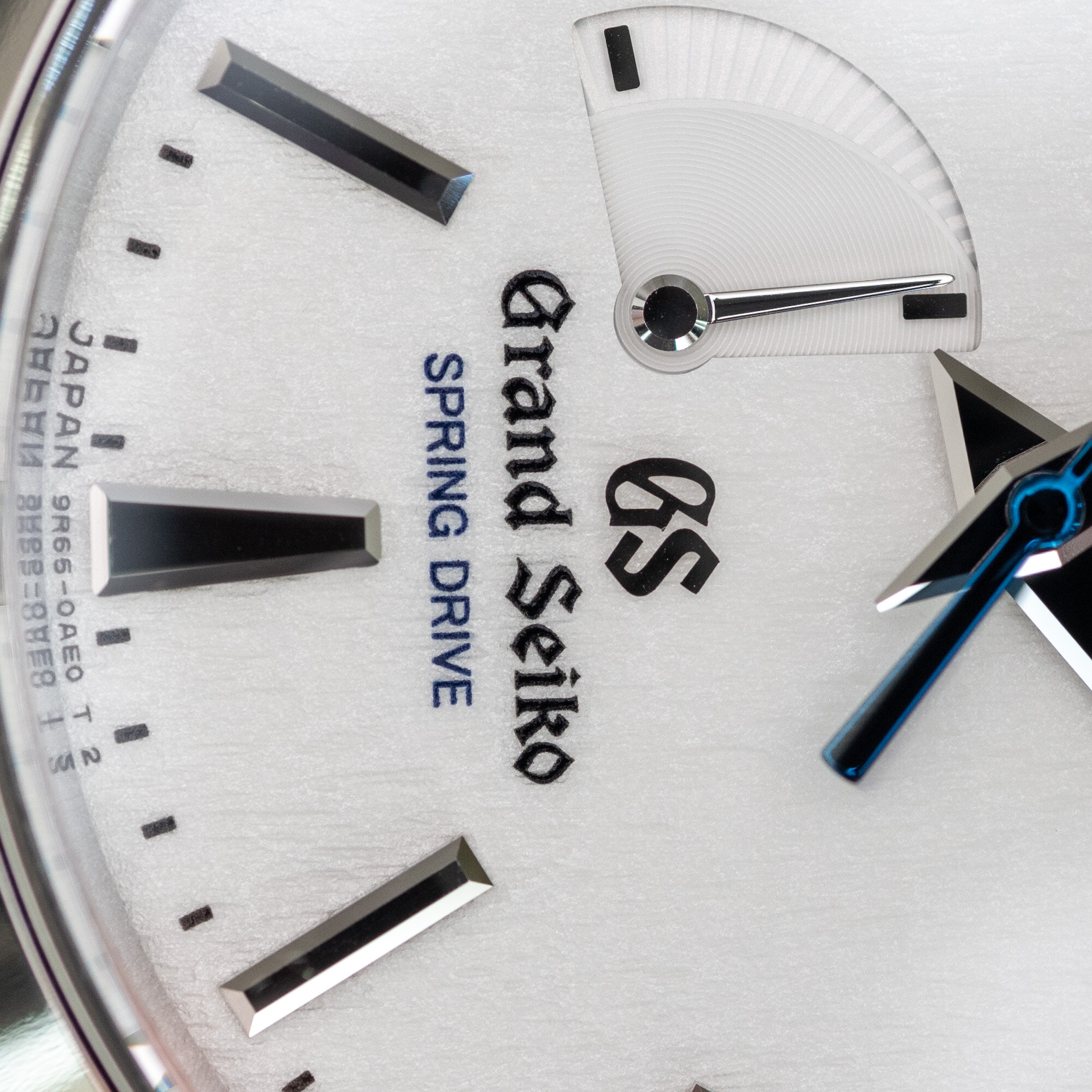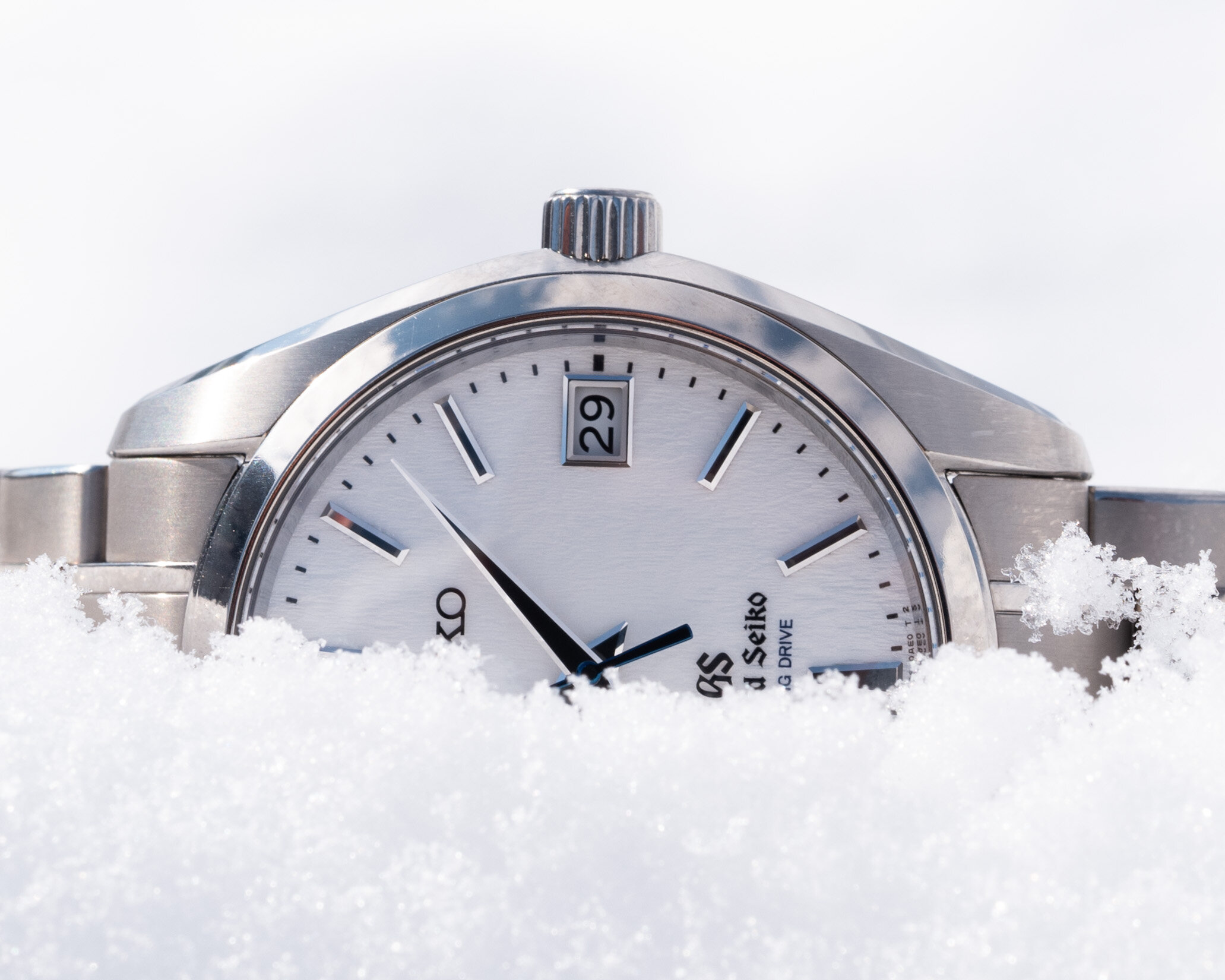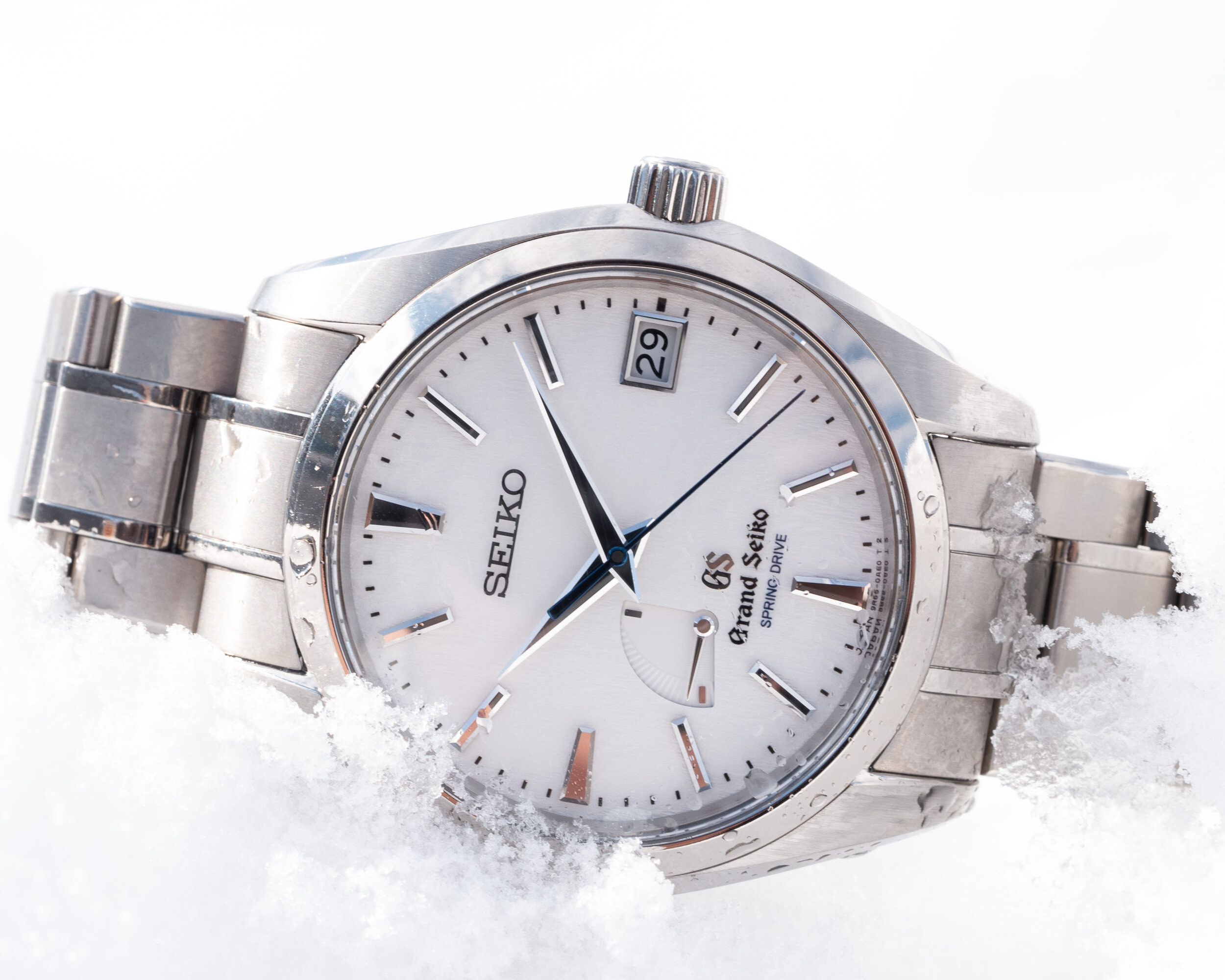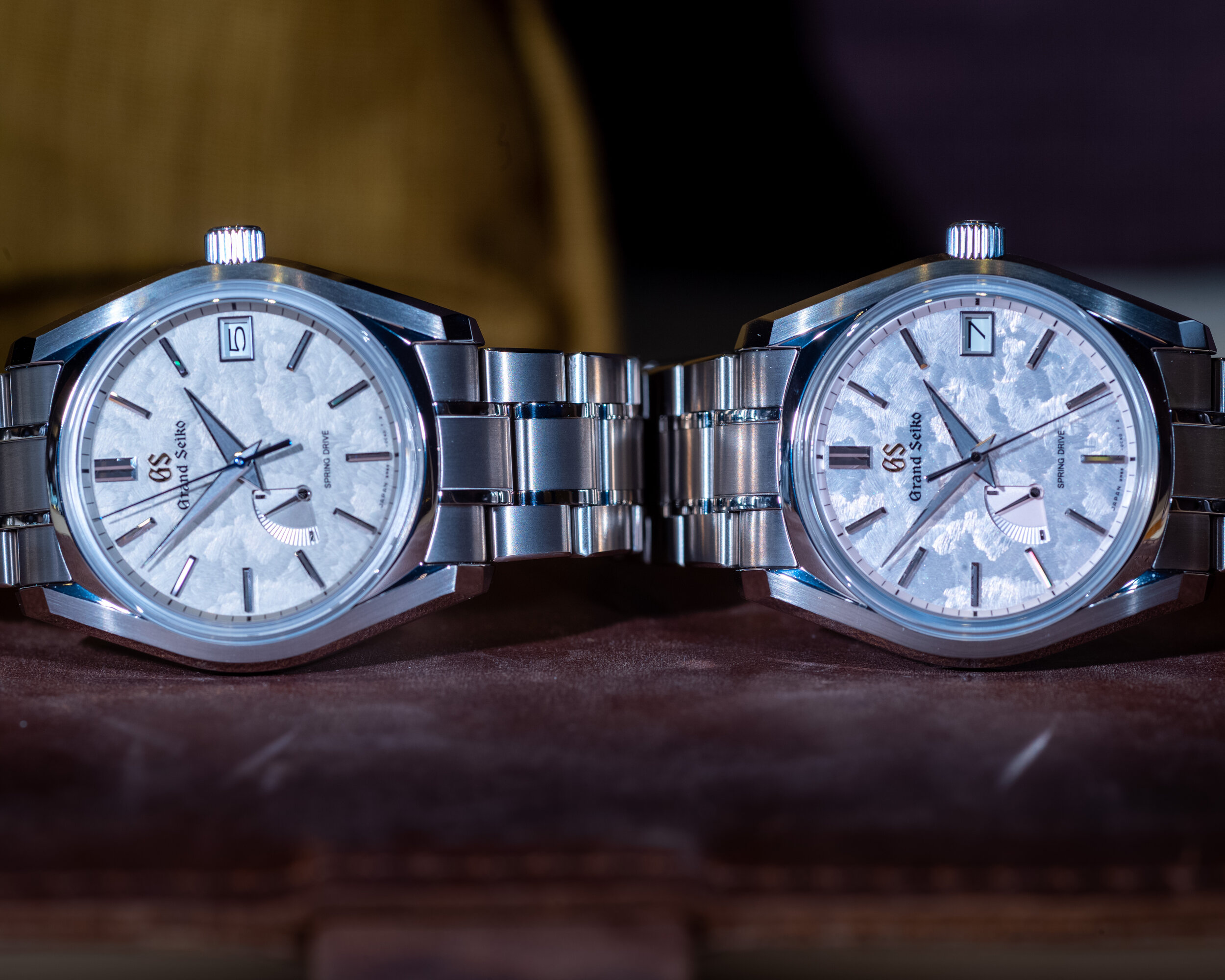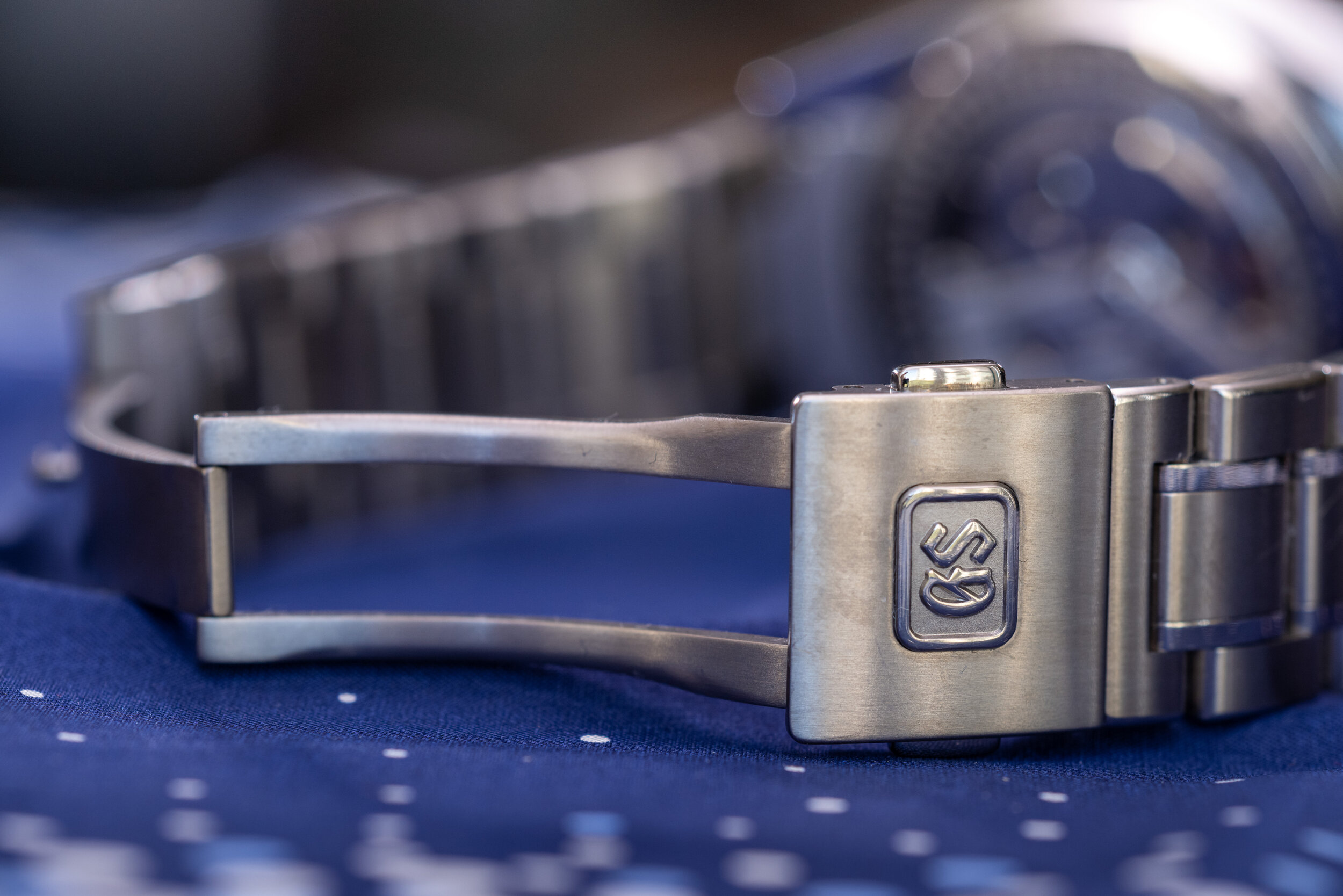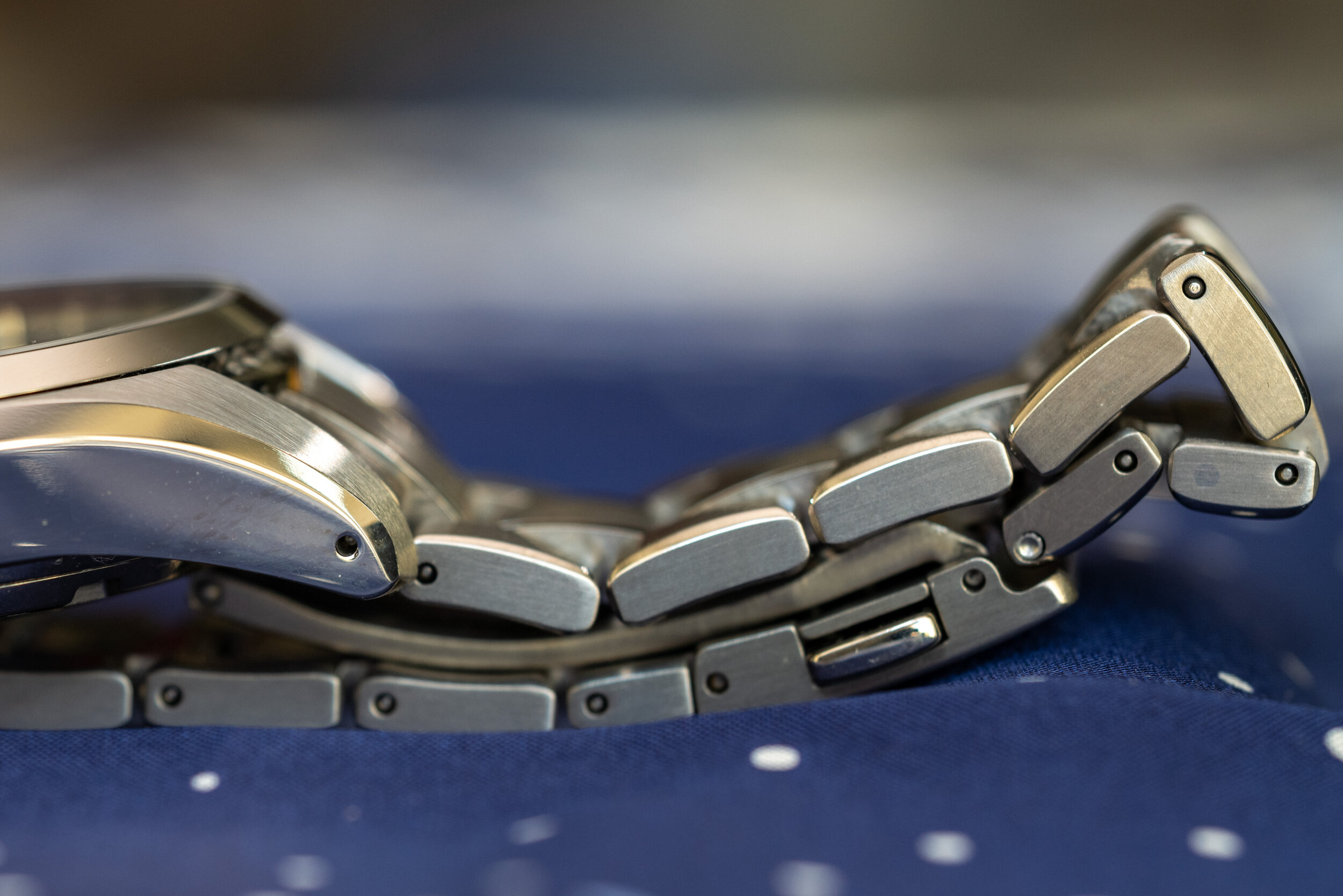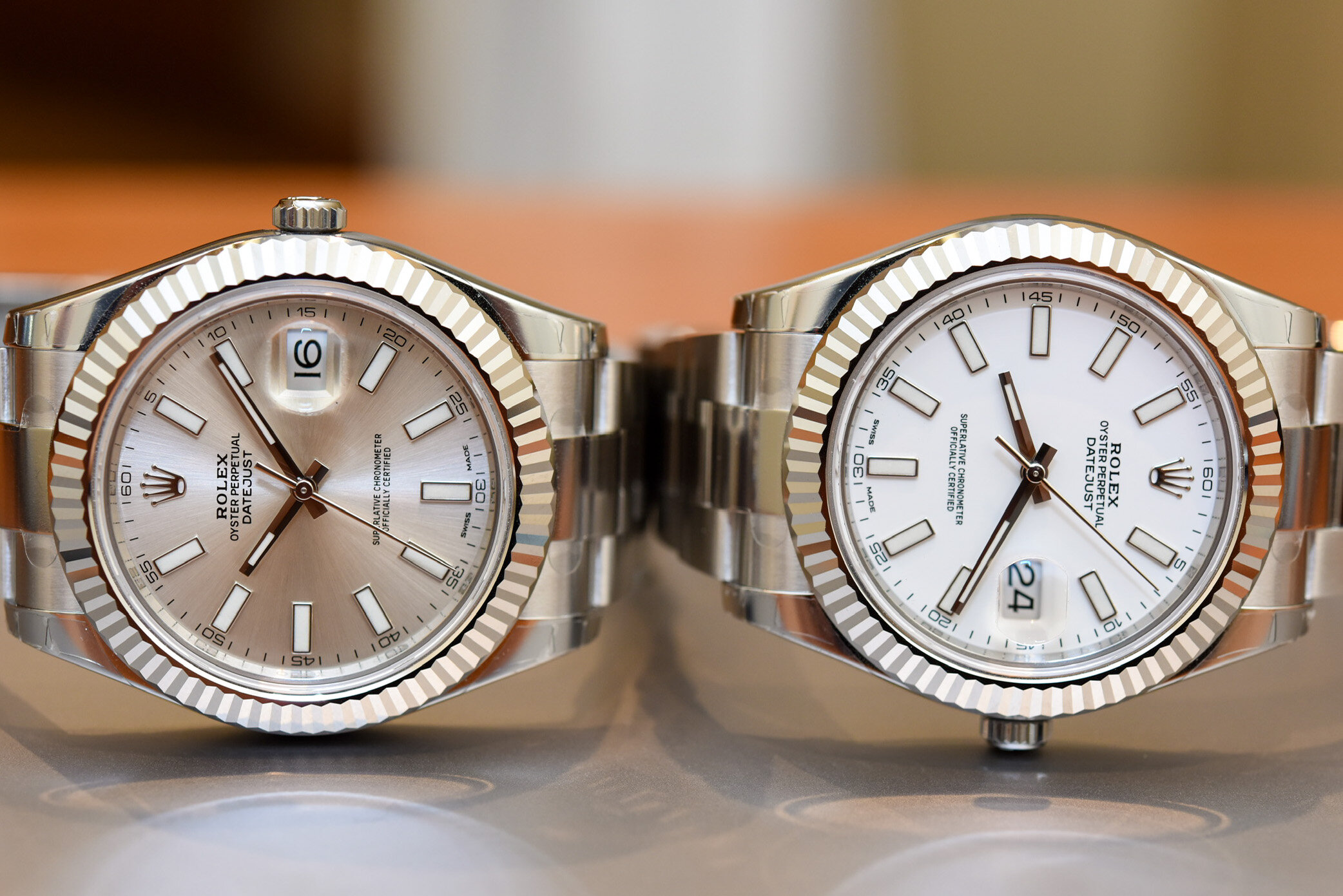Thoughts on my Grand Seiko “Snowflake” SBGA011
The Grand Seiko (GS) “snowflake” is a watch of modern legends. It is a watch that most watch geek will recommend to you and that until a few years ago was rather rare outside of Japan. However, it can now be found readily at one of Seiko's many authorized dealers in the United States and across the world.
With the recent separation of the Grand Seiko watches as their own sub-brand, GS watches should be omnipresent at every watch enthusiasts gathering. Let’s explore my own journey discovering Grand Seiko and in particular my thoughts on my own GS “snowflake” that I acquired six months before the decision to separate into a sub-brand. I will also argue why this specific model is still the best Grand Seiko to get...
Introduction
The history of the Grand Seiko, until this recently, is one of one a watchmaker's perseverance and Japanese perfectionism. In 1977 Japanese watchmaker Mr. Yoshukazu Akahane set out to create the perfect, most accurate, mechanical watch. This from a brand that disrupted the mechanical watchmaking world with the invention of quartz watches in 1969.
Anyone who has visited, or better lived in Japan can attest to the common trait that seem to permeate Japanese culture. Perfectionism is perhaps the most appropriate one word description. After years of trials and tribulations, the outcome of Mr. Akahane’s efforts is a reinvention of what a watch mechanism could be. Drawing from the best of electronics found in a quartz movements with elements of Swiss mechanical movements is the creation of the Seiko Spring Drive in 1997. A sort of enchanting mechanical creation that could be laughable if the resulting performance was not so incredible.
Models
Before the Grand Seiko brand was disconnected to the Seiko brand in 2017, most Grand Seiko watches only included a small inscription on the dial to indicate the sub-brand. The Seiko inscription was shown prominently at 12 o’clock as it is in the snowflake version that I own. The reference for my watch is SGBA011 and it was first introduced in 2010.
After 2017 the Grand Seiko models now do not show the parent brand anywhere on the dial nor on the case nor the bracelet. Instead, the full Grand Seiko moniker is used along with the abbreviation GS. The direct successor to my snowflake is reference SBGA211, MSRP $5,800.
Snowflake
Besides the lack of Seiko on the dial, the rest of the watch remains the same as the current model. The dimensions are 40 mm wide, 13 mm high, and with lug-to-lug of just under 50 mm. The watch includes a full bracelet with deployant clasp, yet the total weight is less than 100 grams — 94 grams to be exact on mine with a few links removed. The reason for the light weight, which helps partly in explaining the snowflake nickname that watch collectors affectionately call this model, is the titanium construction.
Case
Grand Seiko terms their use of titanium as “high-intensity titanium". This is because, while the entire watch is in titanium, reflecting the matte grey hue that is common for this metal, various parts of the case and the inner sections of the bracelet are given a high polish. The result is almost reminiscent of polished stainless steel and difficult to distinguish from afar. The overall look is less like a titanium watch than the look of a typical stainless steel watch.


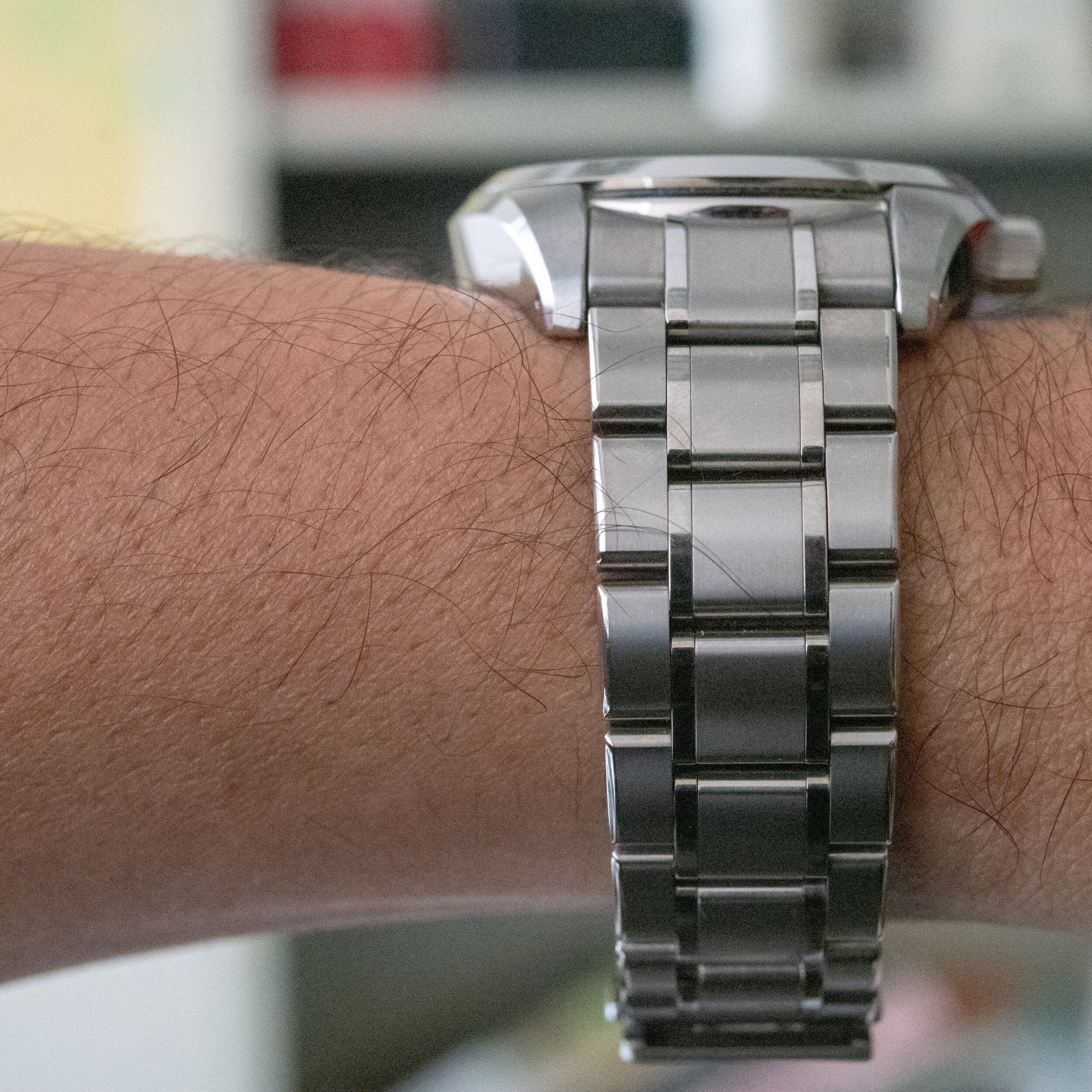
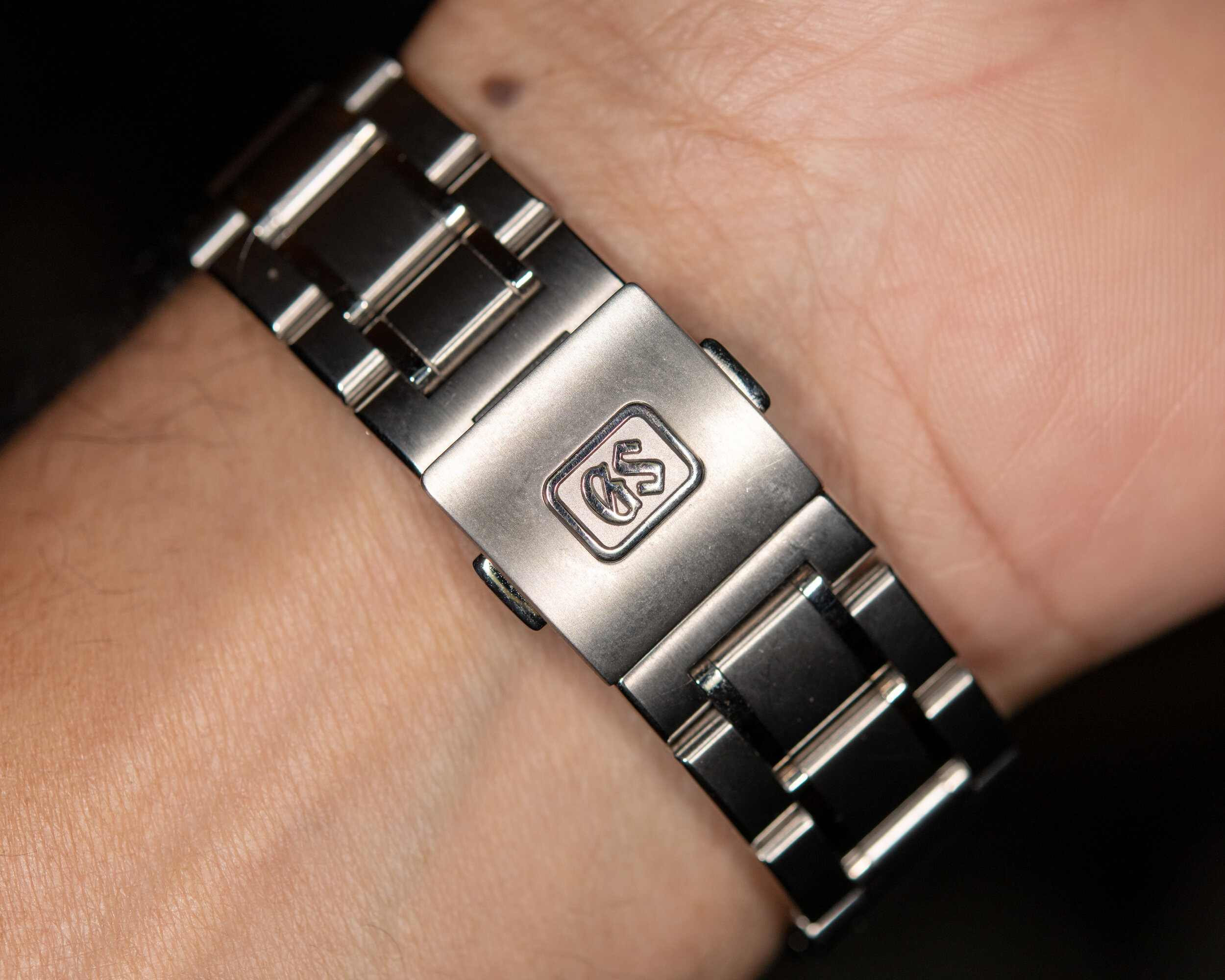
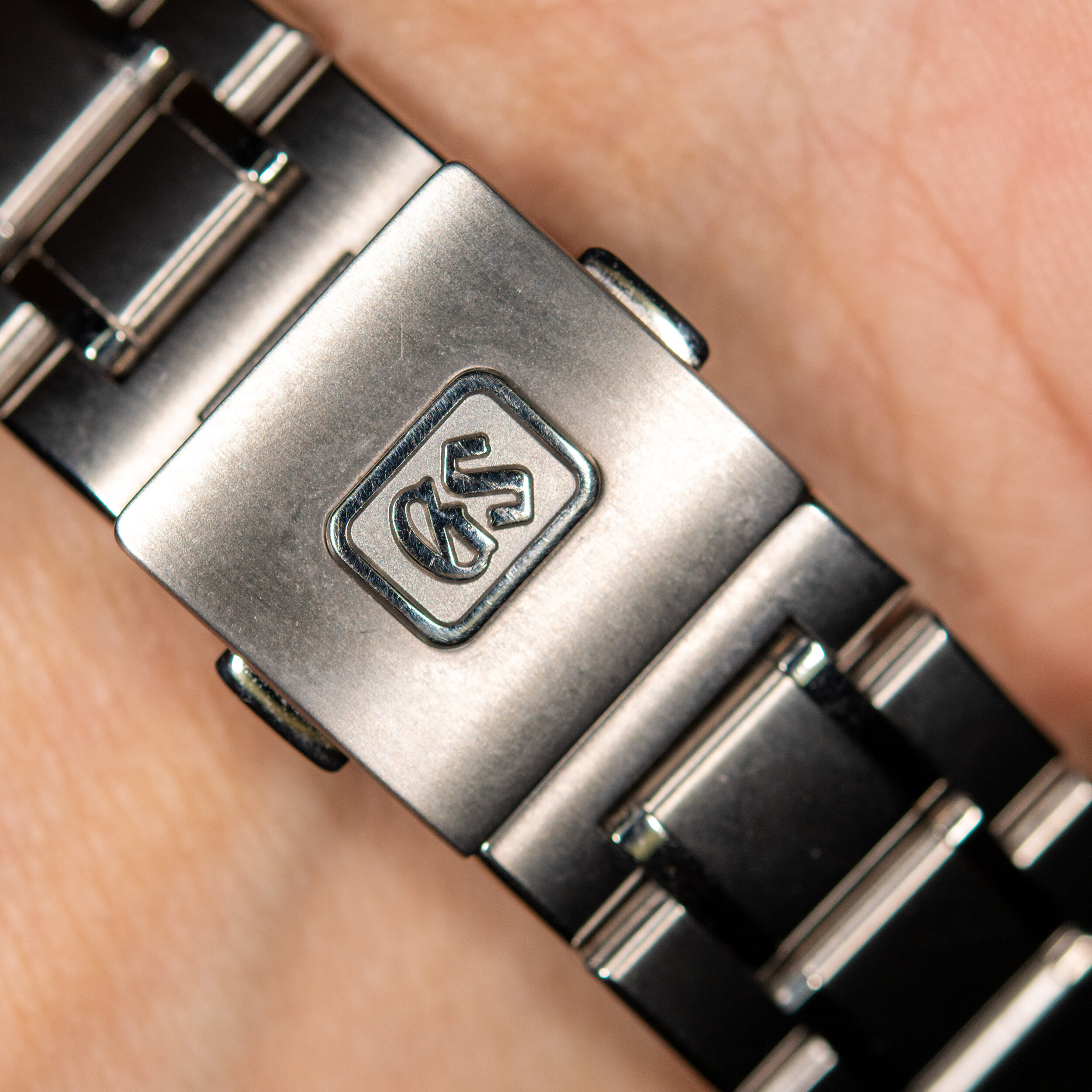
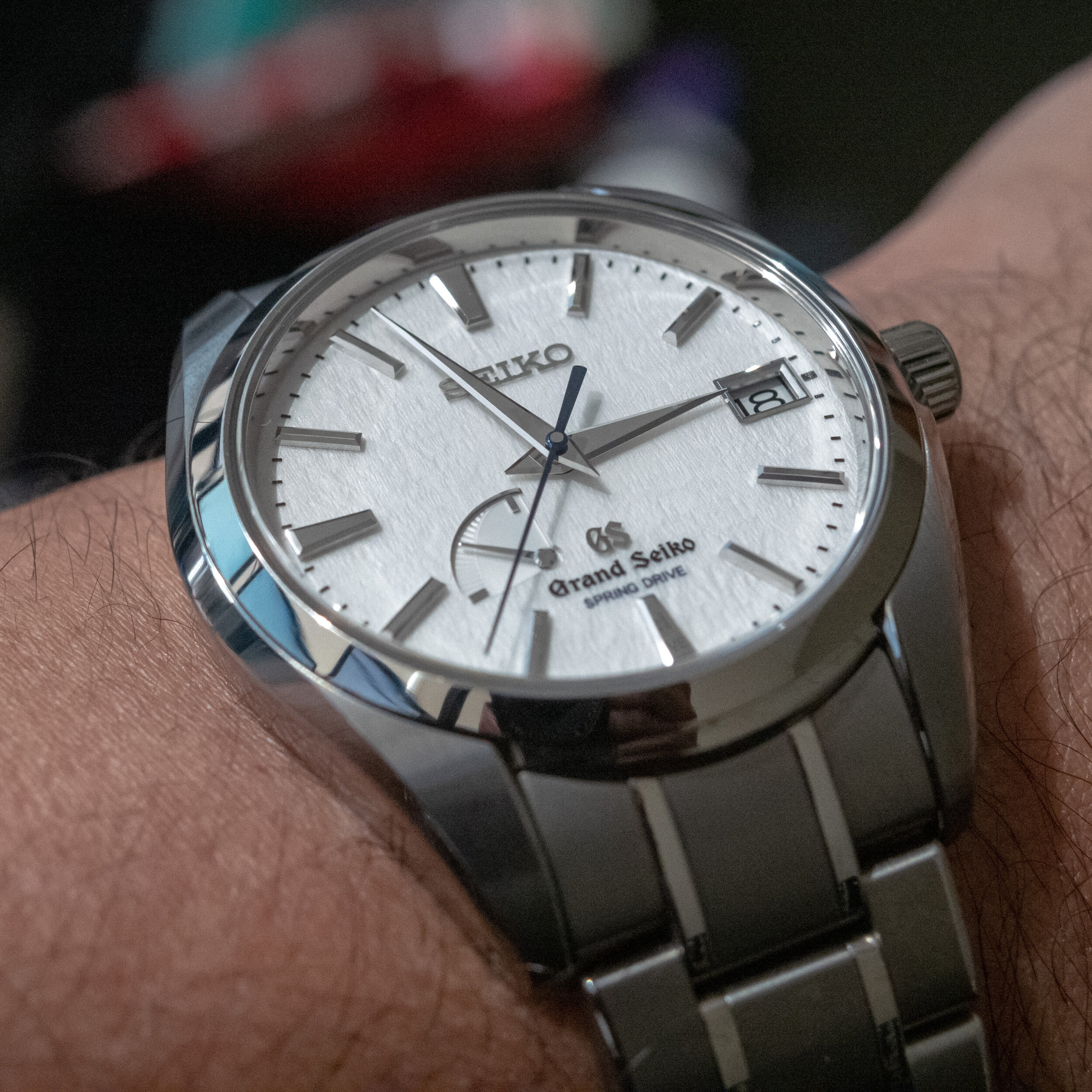
Dial
The distinguishing aspect of the snowflake is the dial. Legend has it that Seiko created it by trying to mimic the color and texture of fresh snow near its manufacture in Shiojiri, Japan, near the Winter Olympic city of Nagano. The resulting dial is as dreamy as it is beautiful. It’s unlike anything you’ve seen before. And in different lights you get a sense of the texture and the various shades of white it emits, as if it had real perpetual snow embedded therein.
The rest of the dial is comprised of the highly polished hour and minutes hands. These are famously done using a Japanese-unique polishing technique called Zaratsu. It’s the same technique used for polishing Japanese swords which have been passed down generations, for centuries. The results are hands that reflect light in various ways, depending on the ambient light, and this is needed since overall the polished hands means the dial is pretty much white on white.
The central seconds hand is done with a blued steel and is as fine as one’s hair. This is a great contrast to the main hands while making the seconds hands more visible. This is especially appreciated since it also showcases one of the unique characteristics of this watch. The seconds hand glides and does not tick. This is due to the Spring Drive movement used. More on this later.
Finishing the dial is the power reserve arc at 8 o’clock. This shows the remaining reserve from the 9R65 Spring Drive movement that can be winded by unscrewing the crown. The feel for the wind is unique to this Seiko movement and will bring the power from empty to full power in about 40 or so turns. Unscrewing and screwing the crown is easy as it includes an embossment of GS and is threaded without any guards. When screwed down, the watch offers 100 meters water resistance which makes this watch usable at the pool and the beach without worries.
Special editions
While the “snowflake” has remained in the Grand Seiko selection without much change (bar the removal of the Seiko branding), the success of the model has resulted in various special editions, especially for the American market.
American editions
First, in 2018 the “blue snowflake” (SBGA387) was released as a limited edition to the US market. It’s essentially the same construction as the modern (non-Seiko branded) snowflake but with a baby blue dial. Grand Seiko also followed the success of the new variations on the “snowflake” with a golden model with gold hands and indices (SBGA259).
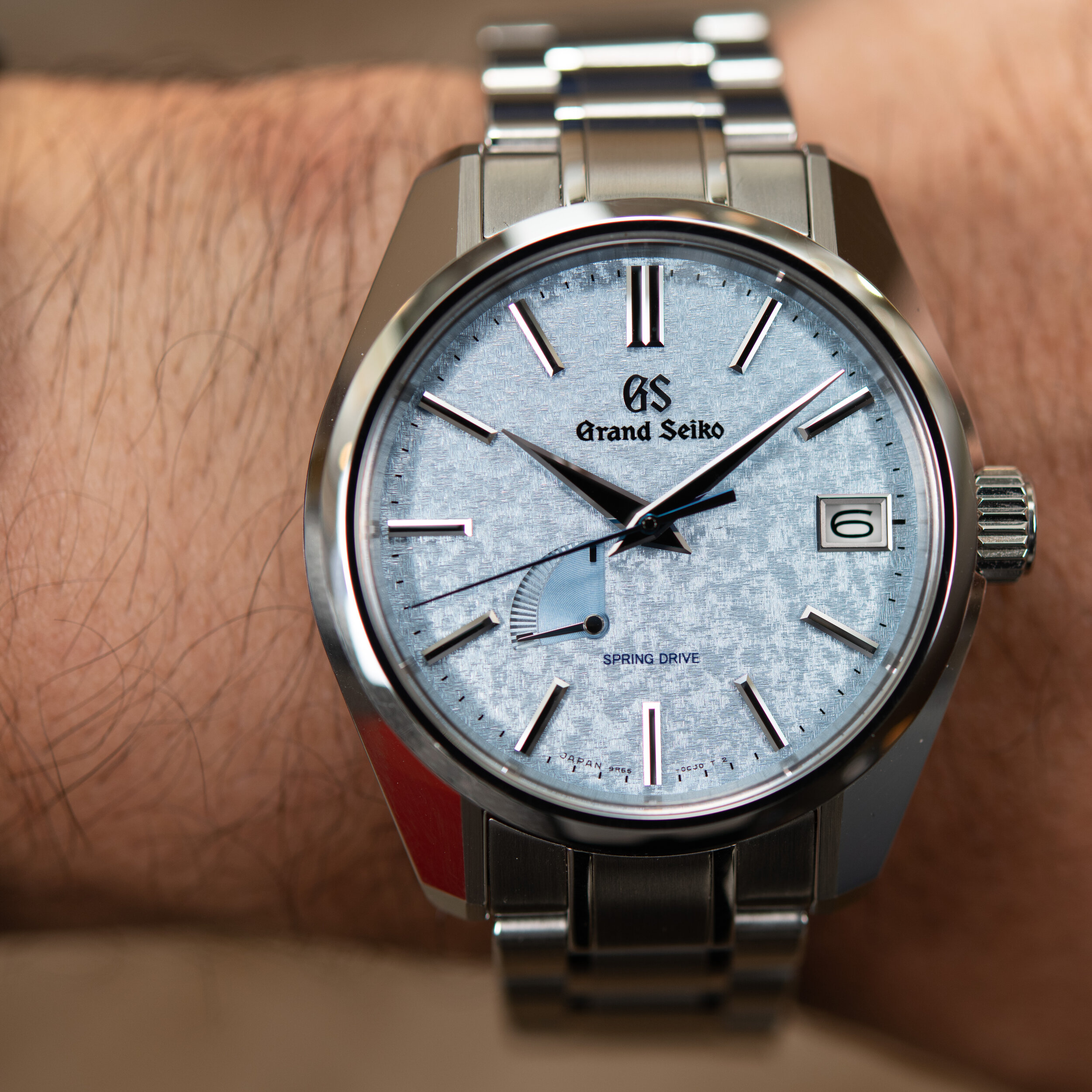
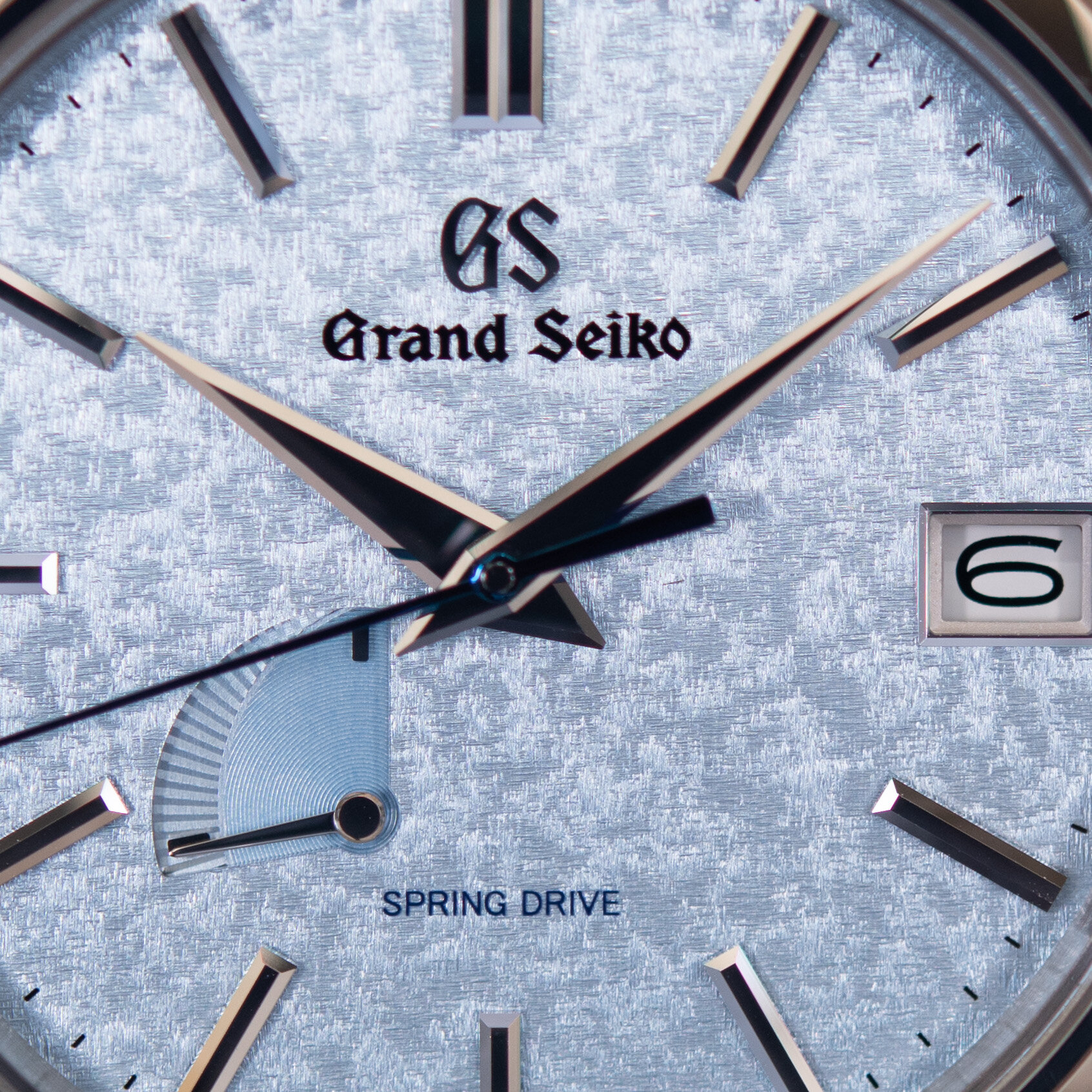

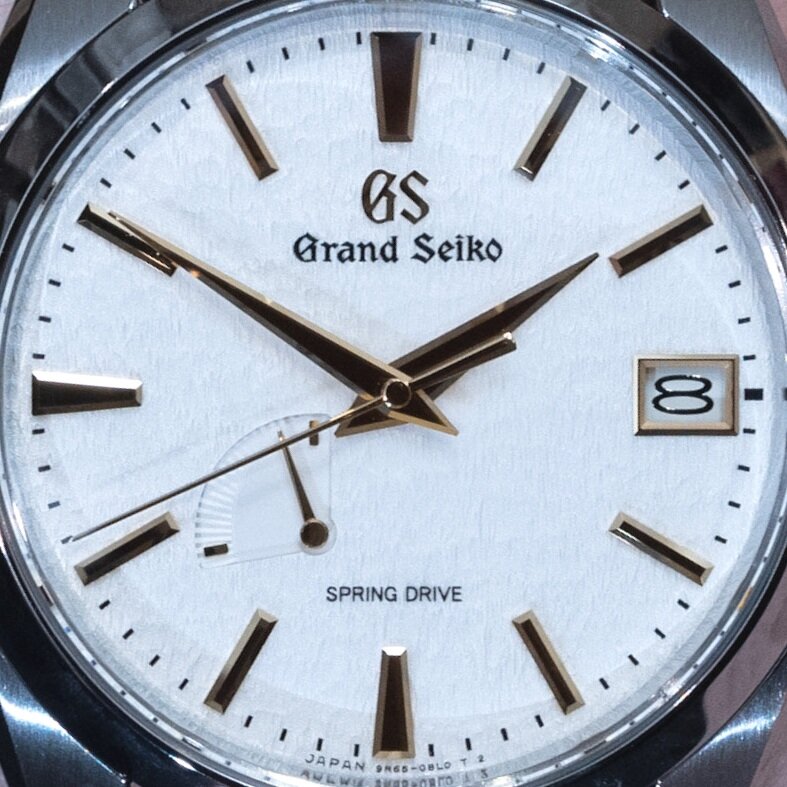
Seasonal editions
As a continued celebration of the snowflake success, Grand Seiko has started releasing what they call seasonal editions. One for each of the four seasons. Two of these models have all the characteristics of the snowflake models but instead uses a pink colored dial for spring and a light grey white for winter. While technically not the “snowflake”, the dial is close enough to mention here as a variant.
2019 seasonal Grand Seiko “snowflake” editions: winter and spring from left to right.
Spring Drive Movement
Instead of a battery operated quartz movement that works with an electric current applied to quartz crystal, which itself oscillates at a very firm and constant frequency; the Spring Drive has all the parts of typical automatic self-winding mechanical watch with power reserve and all. But rather than an oscillating balance wheel to help regulate the movement, Mr. Akahane decided to use an electronic module with a rechargeable battery that applies a regulating brake to the beating heart of the Spring Drive.
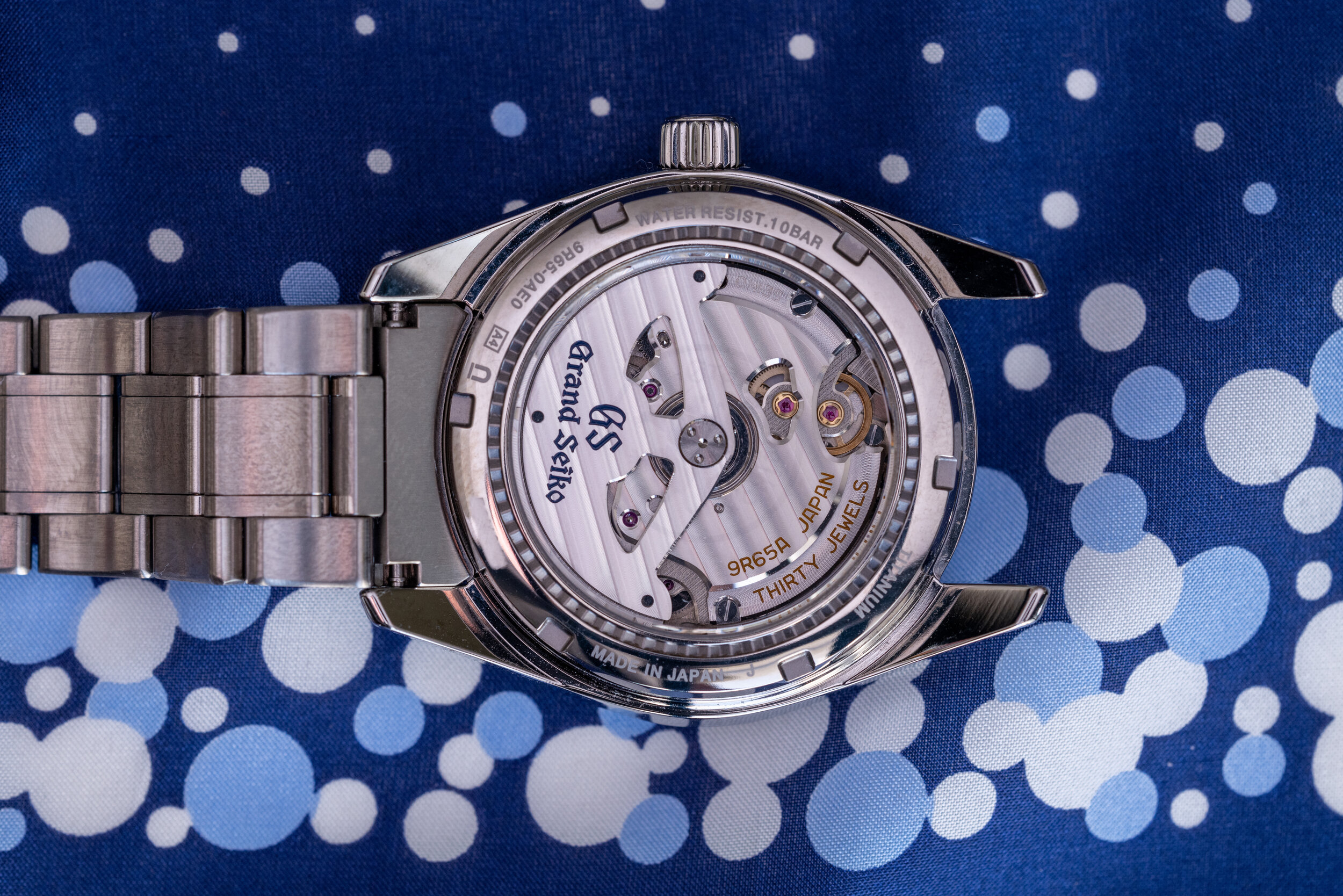
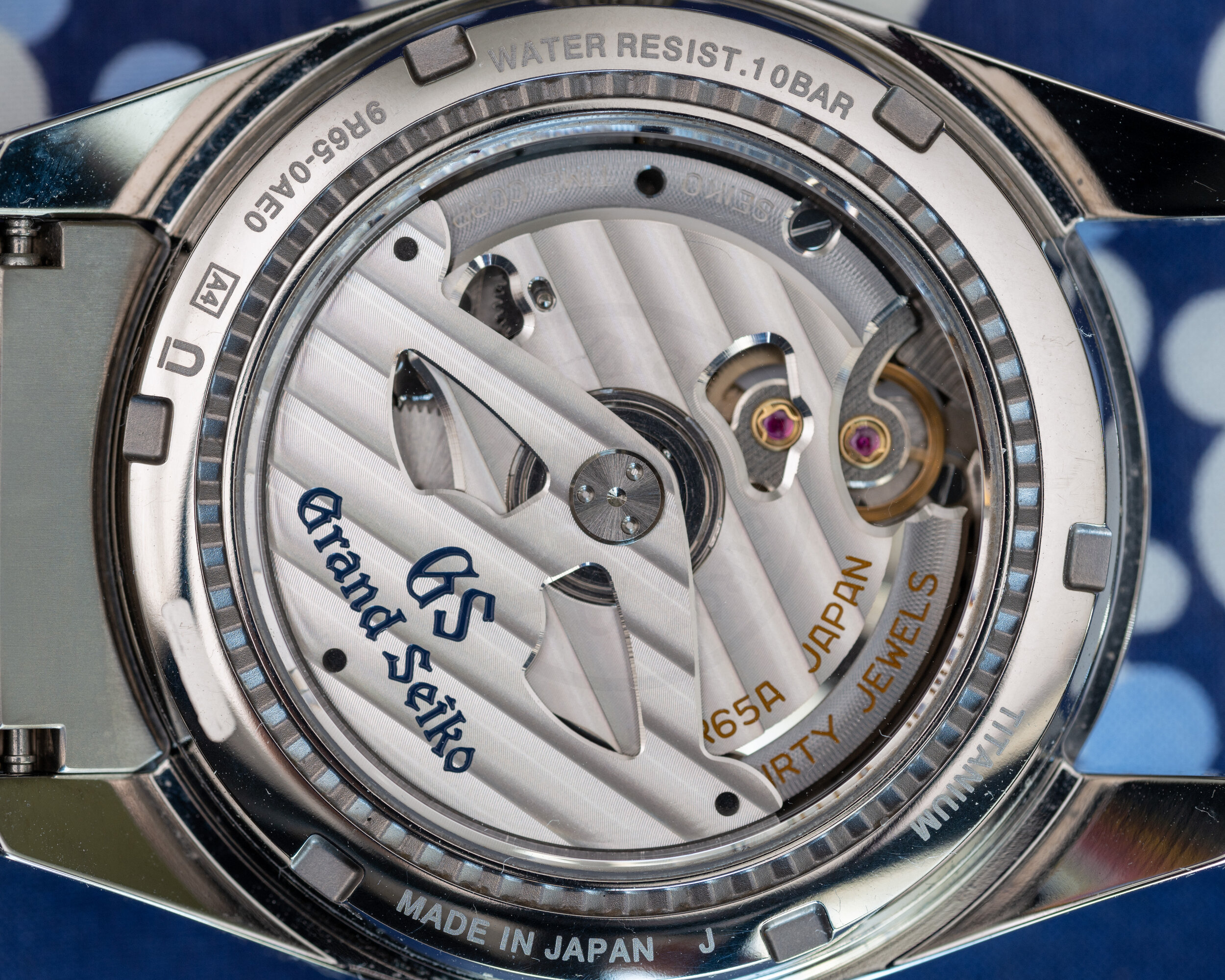
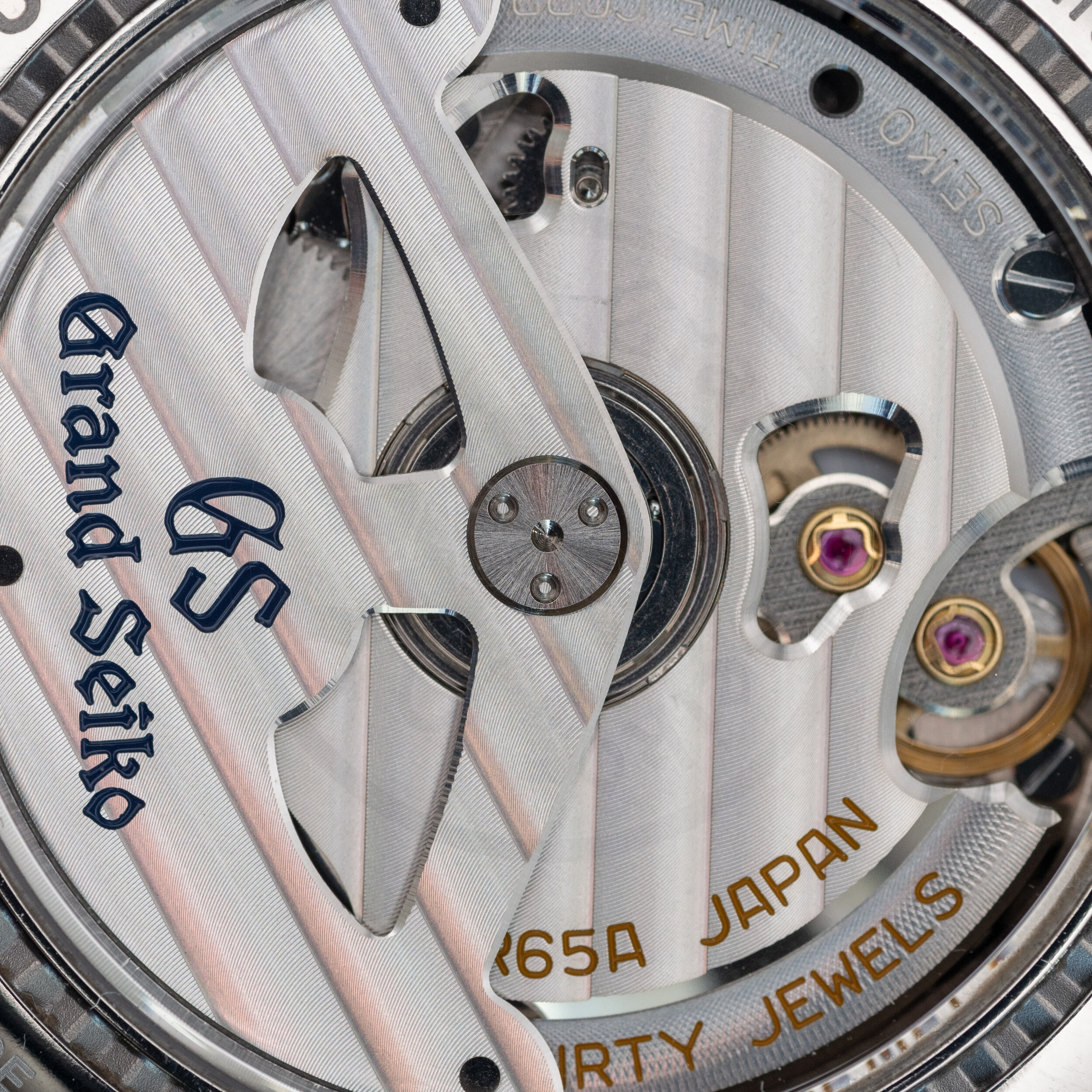
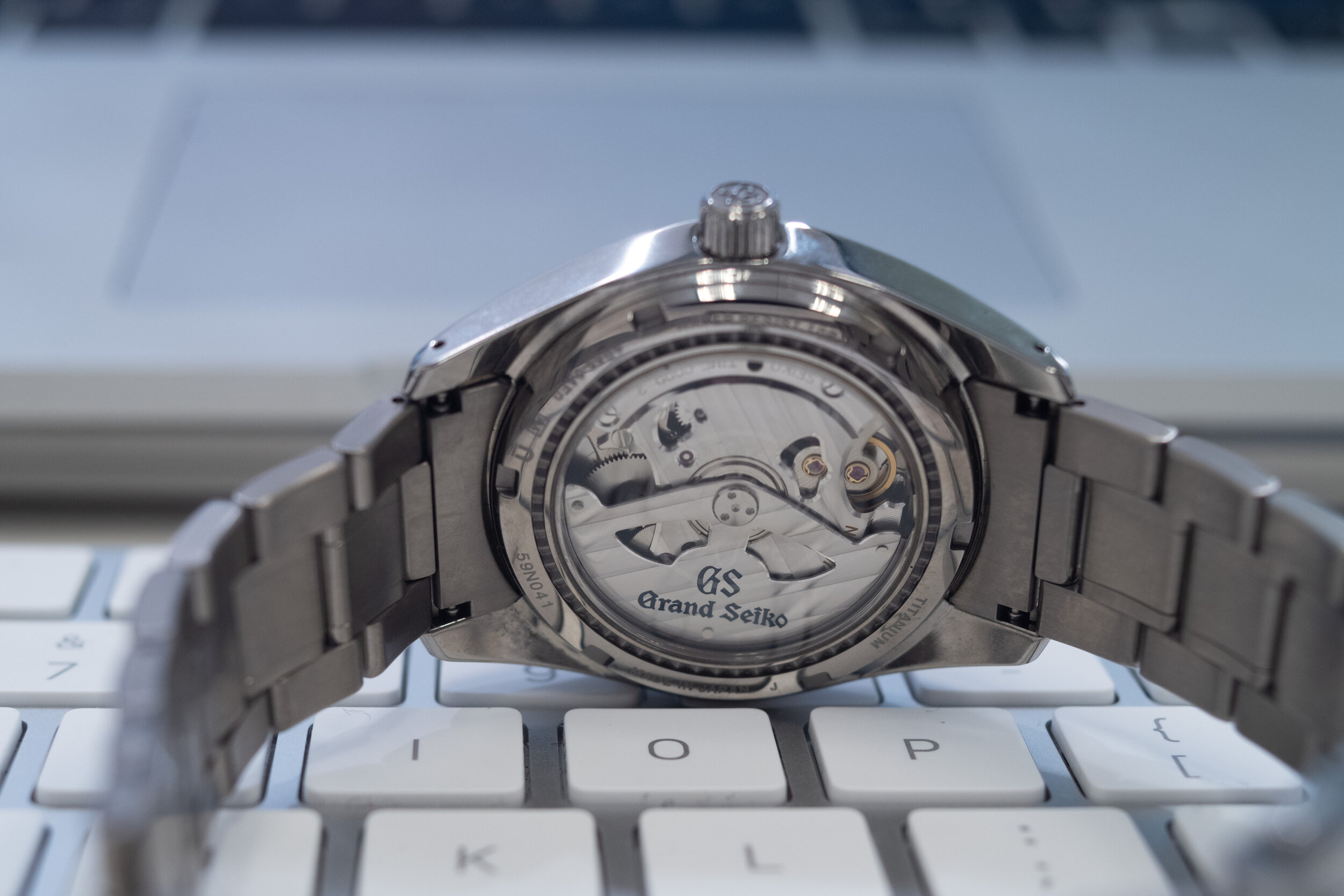
The resulting movement provides a gliding seconds hand, unlike the tick toking of a normal mechanical movement. A sight to behold and a true revolution in watchmaking. And I would not be so kind if it was not for also the incredible performance I have experienced first hand with my SBGA011 snowflake. Wearing it in a weekly rotation, first setting it to the closest millisecond with my iPhone, to have it literally be dead on, at the end of the week. Not even missing one second. And I’ve tried this trick more than once.
Wearability
The first thing that you will notice trying on, or wearing the Grand Seiko snowflake is how light it is. Of course, this is expected since titanium is about 1/2 the weight of stainless steel. And with a full metal bracelet and case, you’d expect it to be heftier. However, the 95 grams feel just right after a couple hours of wearing and just disappears on wrist — unless your wrist expands, which I discuss more next.
Quirks
While the Grand Seiko snowflake in my view makes for the perfect work watch, it is not a perfect watch. No watch is. Some of its quirks, which I list below, may be completely esoteric to me and may not even be issues to other wearers. However, as an owner for over two years and one who thinks this watch has a permanent place in my collection, I wanted to list out the things that bug me the most about this watch.
First, there are no micro adjustments to the bracelet for this watch. This means that once you have sized it to your wrist, which can be done easily at your authorized dealers or with appropriate tools, you are pretty much stuck to this size. And furthermore, because this bracelet is in titanium with high-polished sections, you will experience scratches, though less than I had expected.
The reason this matters is that in my experience wearing this watch for days on in, you will hope the micro adjustment existed on the bracelet. And this is true even while the watch itself is super light and easy to wear. As my wrist expands during summer days, I start feeling the watch. And it becomes annoying, since generally this is a watch I hardly feel whenever I am wearing it.
The final quick has to do with lack of legibility at night. Without a luminescent application, this means that this watch cannot be read easily at night. However, to alleviate this issue, if there are any light source nearby, by flicking your wrist a bit you can catch and reflect some of that light on the Zaratsu polished hands and make the hands more visible to guess the current time. Perhaps some luminescent application on the hands or hour and minutes indicators could help. Of course, this could also change the dial which is something I would not compromised... So call me conflicted if you want.
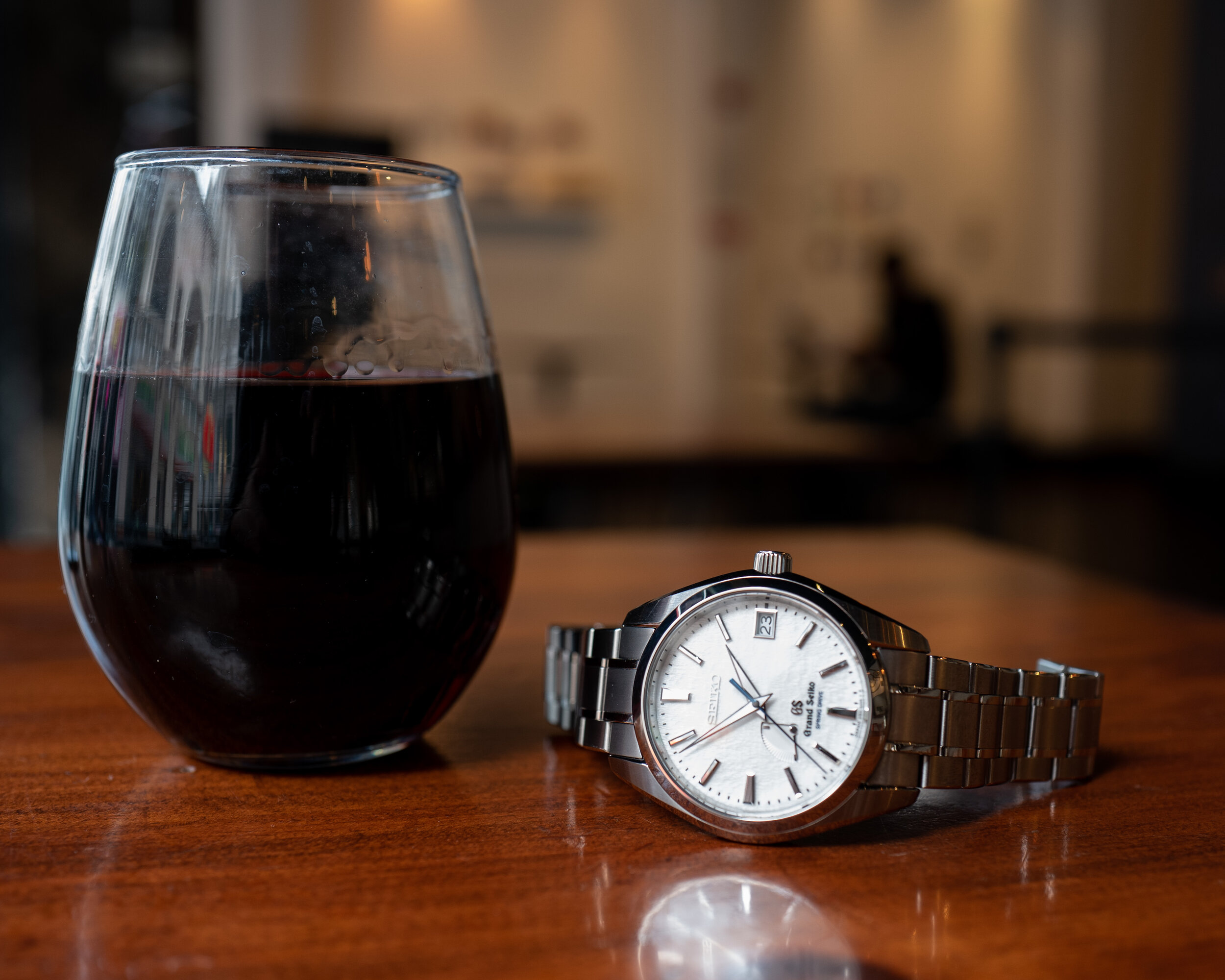
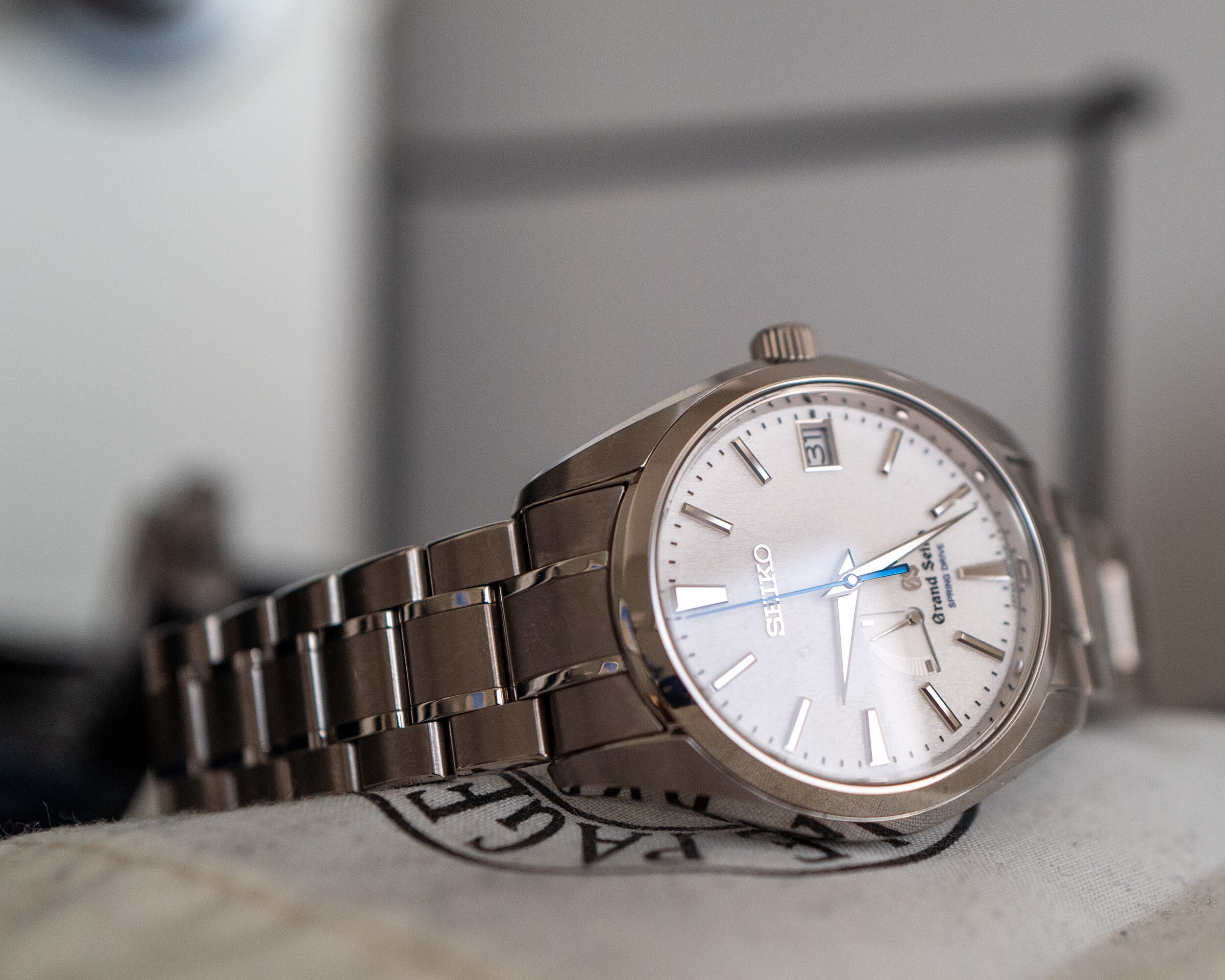
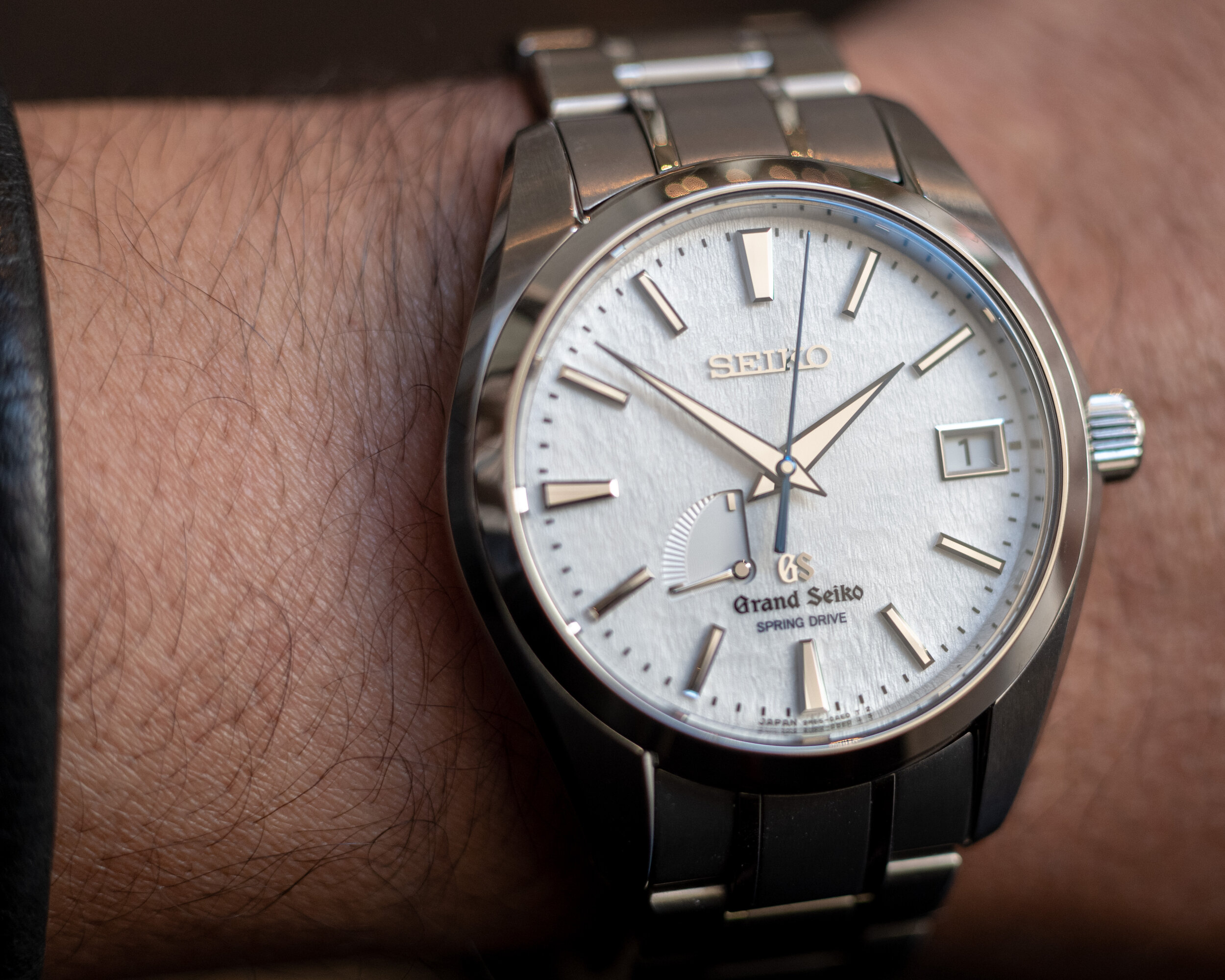
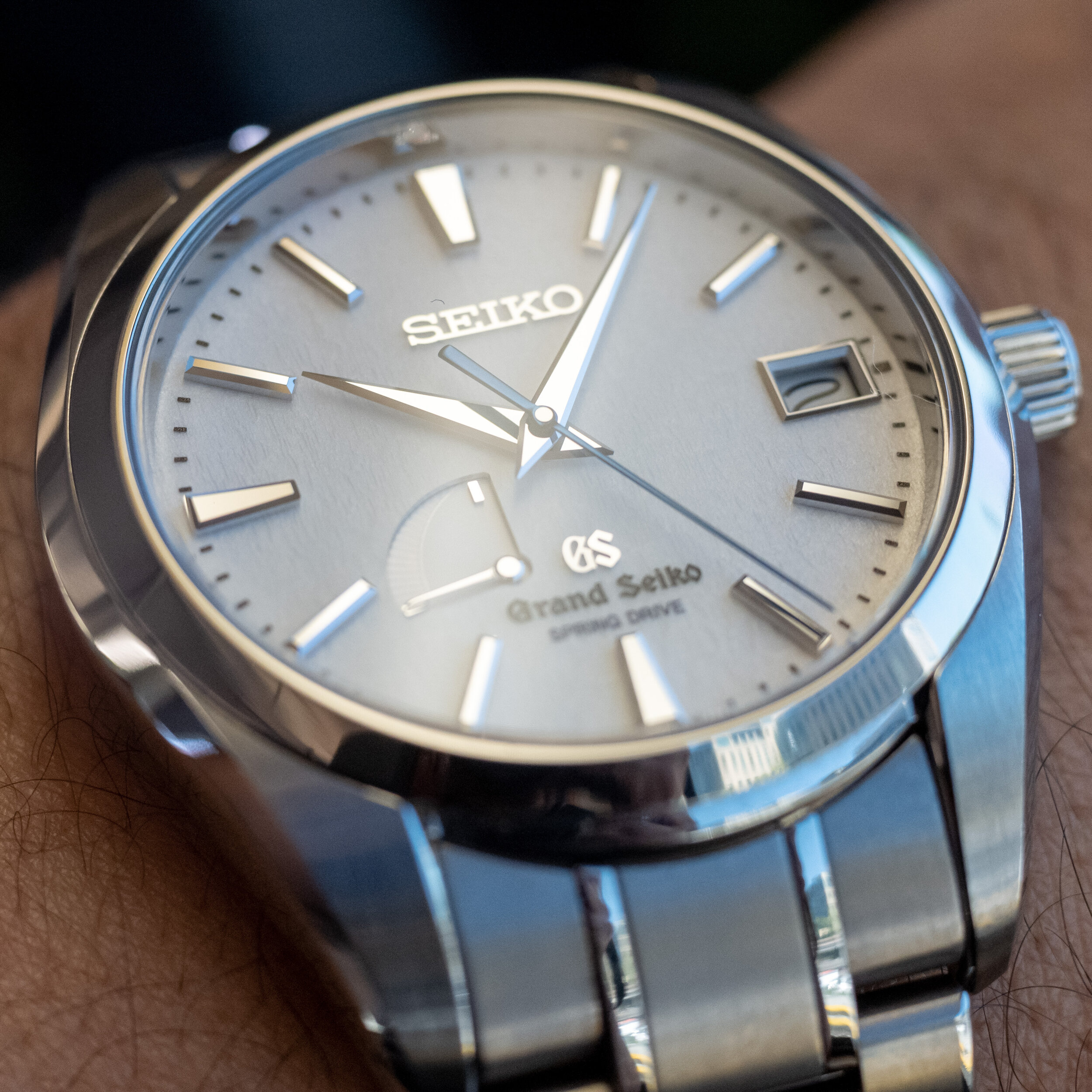
Finally, some folks might also complain that the Spring Drive movement would be difficult to maintain or service. But this, in my view is no longer an issue. With the many Grand Seiko authorized dealers you can find more than one place to have it serviced. I also believe that Grand Seiko offers 3 years warranty for all new Grand Seiko watches.
Who is it for? Activities
So who is this watch best suited for? And what activities? Obviously this kind of questions about any watch or any tool should be whoever loves it (the style, the look) and wants to wear it. However, for a collector or someone with multiple watches, the answer can be more nuanced. My answers are simple and come directly from how I often use this watch.
First, I acquired my snowflake because as I got into collecting I wanted to get a “work” watch that I could wear everyday, without second thoughts. It, of course, had to look good, but also not be a Rolex, and had to be a watch that would not capture too much attention from my colleagues. Many of which did not care about watches and were happy to use their phones to tell the time. This watch I believe fits this billing perfectly.
Naturally, many other decent watches would also do, but I also wanted a watch that could be a conversation piece if any of my co-workers ever noticed it. Generally, the reaction I get is “nice watch, what’s the brand?” And when I say “Seiko”, the common reaction, is “wow, cool, where can I get one?” and of course, this is where I need to get into the details of Grand Seiko and Seiko differences. I generally don’t volunteer the price, though I tend to indicate that this is not your average “regular Seiko” watch.
Competitions
The category of watches that are dressy, with bracelet option, solidly built to be usable as an everyday watch is filled with good alternatives. The Grand Seiko snowflake is a recent addition to this precarious group. Let’s explore some of my favorites as well as some of the more popular options. I don’t own any of the other ones I am listing, though I had hands on time with each. The first two are probably the models I’d gravitate toward the most had I not own this current watch.
Rolex Datejust
The Rolex Datejust is the silent icon in the “crown”’s portfolio. It’s versatile, and Rolex offers 41 and 36 mm versions. The number of dials colors, bezels (smooth, fluted, or diamond encrusted), metals, and bracelets (three-links and jubilee) offerings, over the years might filled multiple catalogs.
Rolex created the no-date version of the Datejust as its own line in the Oyster Perpetual. However, the original Datejust is the one to get. Starting at $7,000 and above for a steel 36 mm version and $8,000 and above for the 41 mm model. The Datejust also constitutes one of the most affordable, mostly readily available Rolex “steel watch” on the market.
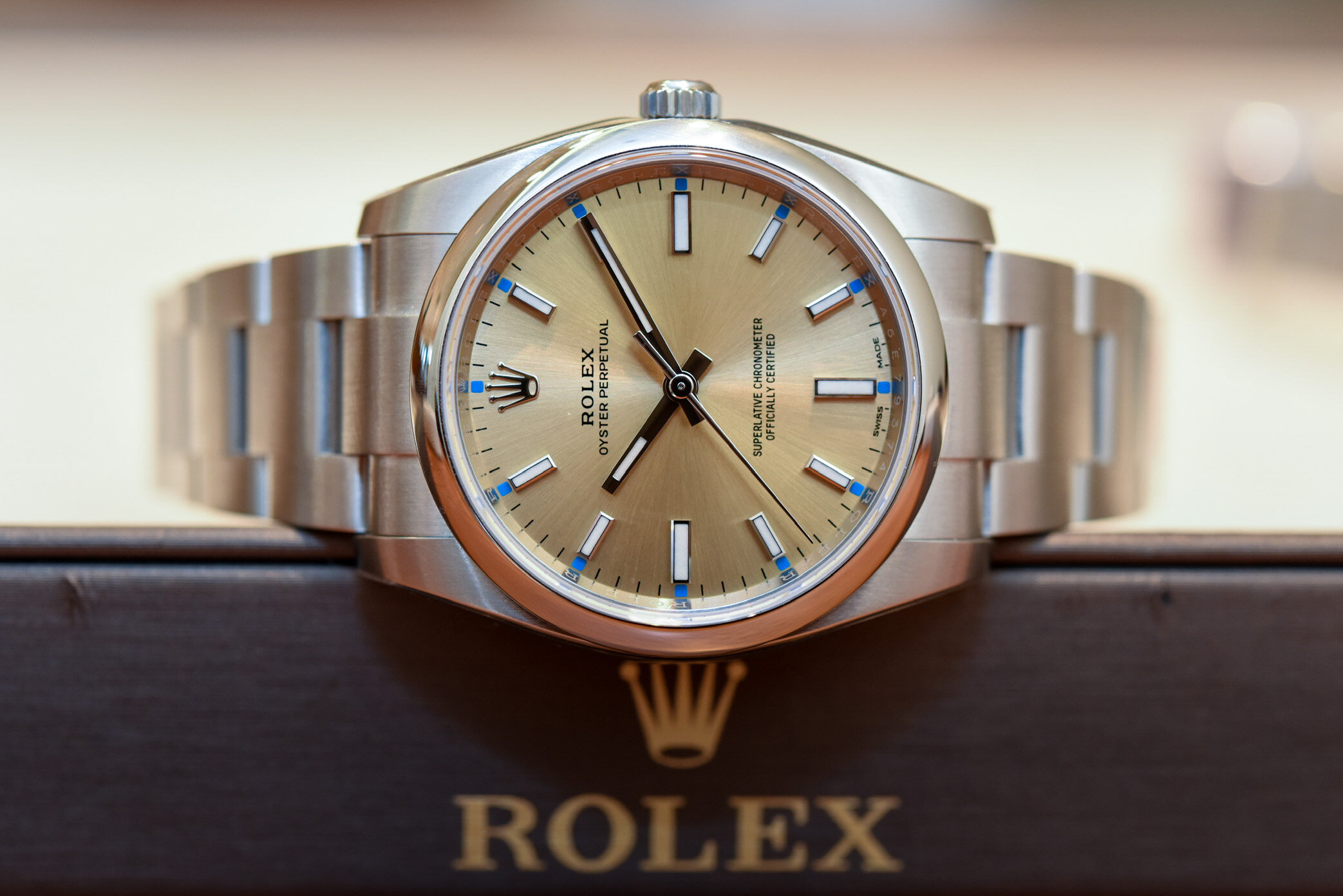
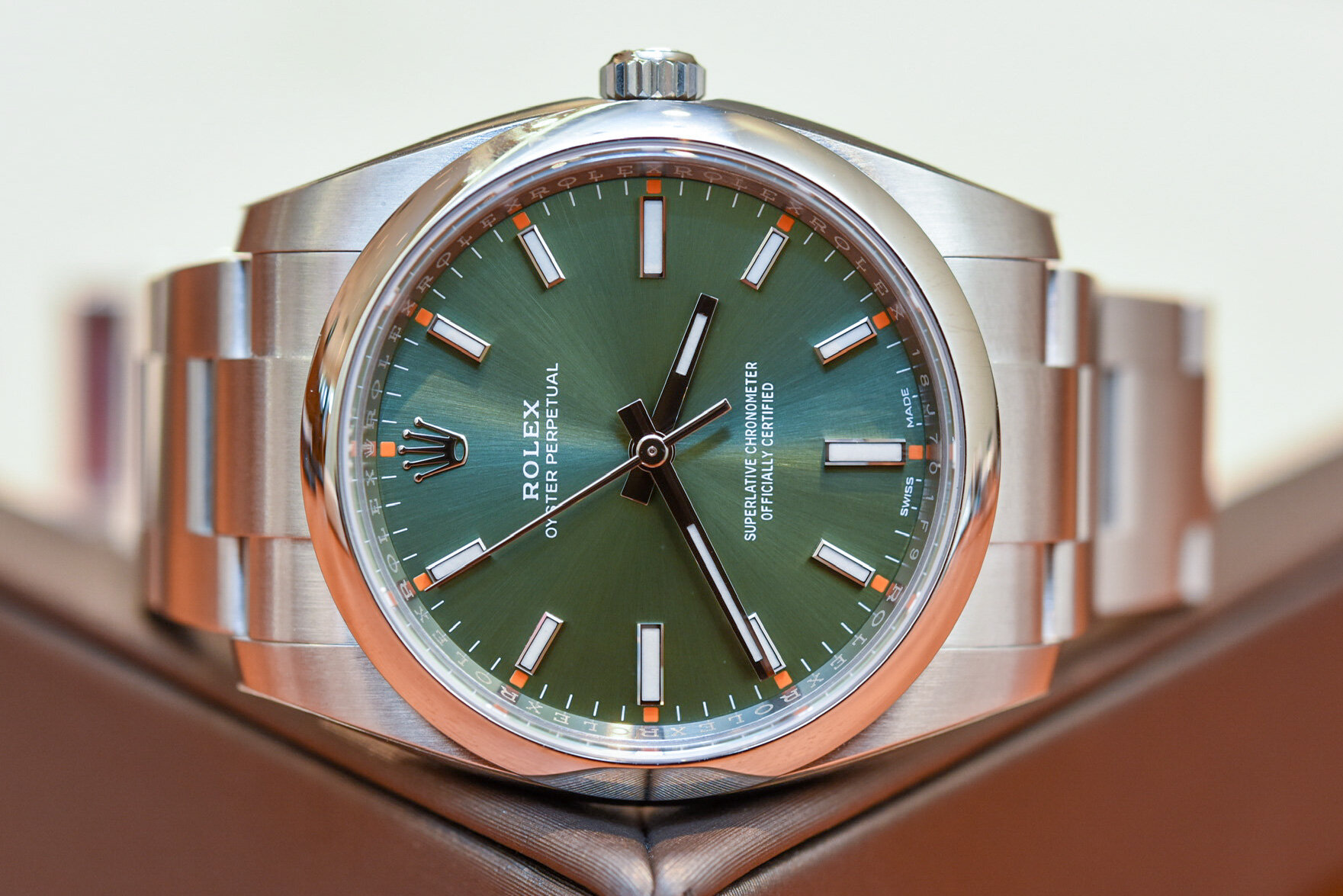
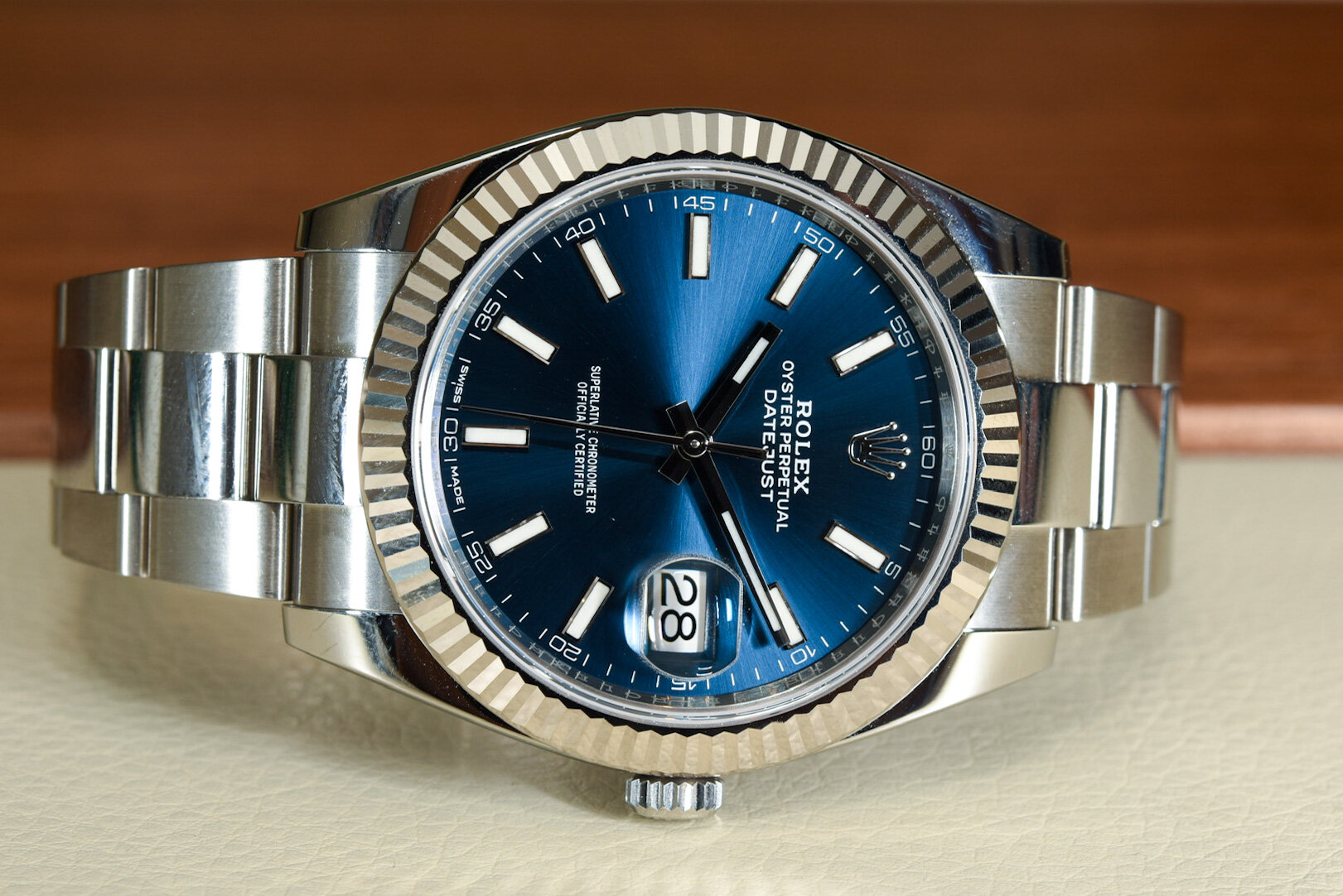
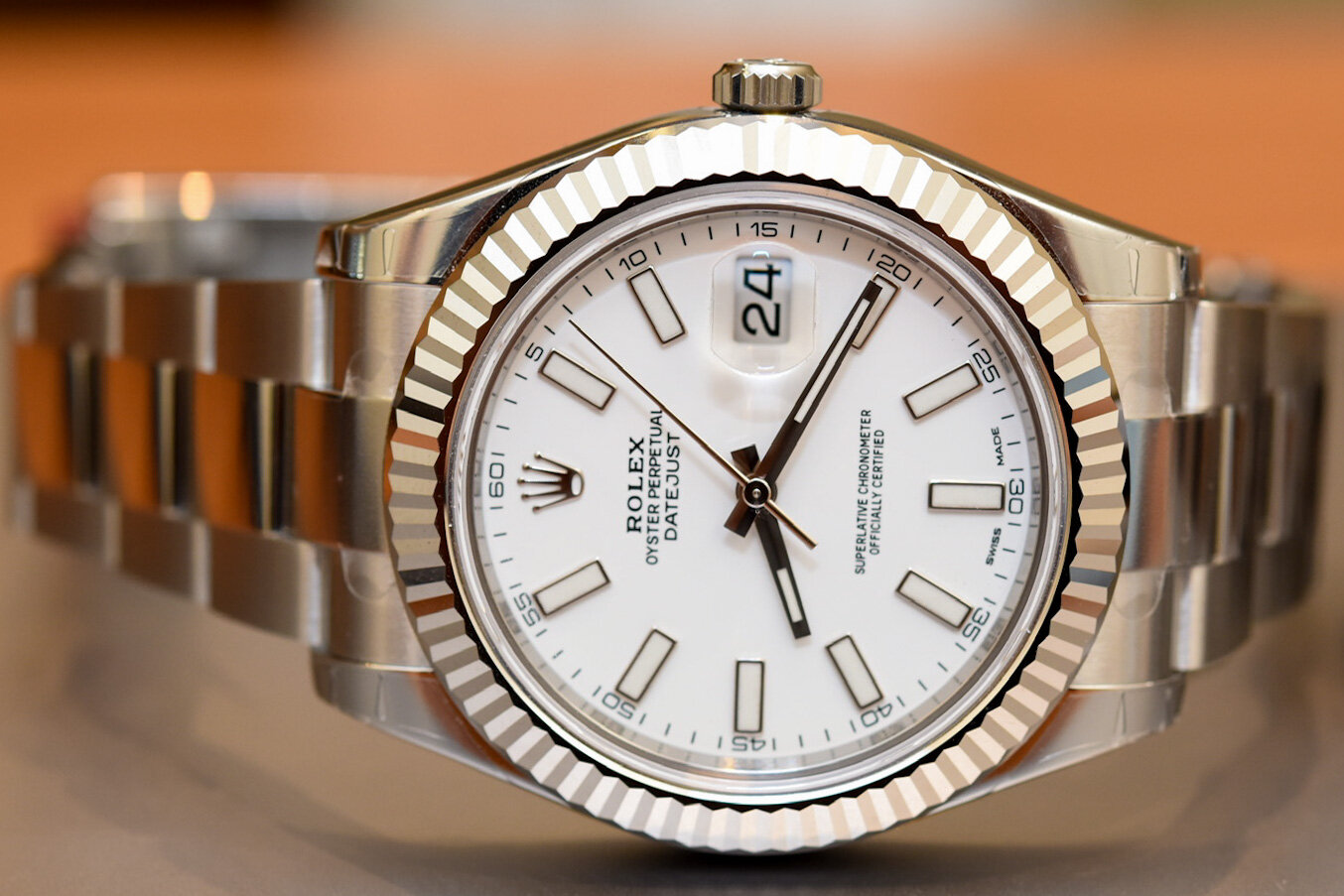
Recent scarcity of the Rolex steel sports model has made the Datejust the go-to entry Rolex for new comers to mechanical watches. And this might also result in the Datejust being itself hard to get... but then, if this is the case in your local market, you should just get a Grand Seiko instead.
Omega Seamaster Aqua Terra
The Omega Seamaster Aqua Terra is an excellent compromised for an everyday watch. Like the Datejust, the Aqua Terra constitutes Omega’s best entry-level day-to-day versatile watch. Its 150 meters water resistant and new anti-magnetic METAS movement result in arguably the best value for performance in this category.
Starting at just over $5,000 for the basic model with a stainless steel bracelet, Omega offers a dizzying number of variations and metals and strap options, especially in recent years. My suggestion is to browse Omega’s Web site, go an authorized dealer and try some on. You are bound to find a dial color that will sing to your heart.
IWC Pilot Automatic 36
IWC Pilot Mark XVIII with 5-links stainless steel bracelet
A more sporty alternative, the simple IWC Pilot Automatic 36, at just above $5,000 is probably the best value in the IWC catalog. And the brand from Schaffhausen offers a slew of variations including one with a fine 5-links bracelet. Also, there are many special editions with blue and green dials or with cases made of ceramic and more recently an IWC Pilot in ceramic mixed with titanium (or certanium) as well as a limited edition in bronze.
Others
While I could go on with dozens more example of versatile dress/sports watch available in the market today, especially from smaller less known or less popular brands; I will only list one more that I personally like and would consider as an alternative to my Grand Seiko in the way I use it and for the explicit purpose of being an under the cover work watch that is usable in other settings.
NOMOS Club no-date
The brand and model that comes immediately to mind is the NOMOS Club Datum. While I own the non-date version of this watch, which I will review in a future post, I think the NOMOS Club overall is a great alternative. It has a unique aesthetics that either appeals to you or not. But for the just above $2,500 entry point, the Club is a great value in this category. NOMOS has also different variations for this model. There is a black dial (schwarz) as well as offering different colored strap options.
NOMOS Club Sport neomatik “schwarz” on new bracelet option
However, the best reason to consider a Club may be that NOMOS in 2019 has introduced a stainless steel bracelet. The Club Sport neomatik line comes with a mesh-like bracelet alternative to their excellent Shell Cordovan straps. However, the price for the new Club Sport increased to just above $4,000. Hopefully, in time NOMOS will offer the option to buy the bracelet separately to fit it to other Club models which share the same 20 mm lugs.
Final Thoughts
For its lightweight and precise construction, the incredible technology inside, the delicate white flackery snowy dial, and yet with its unassuming design, the Grand Seiko SBGA011 is for me the perfect work watch. With the many recent variations you can also get one that is more customized to your taste and would be even rarer overall. While Seiko’s decision to remove the double branding on the dial might make this SBGA011 model something of a collector’s item, this is a watch that does not spend much time in my safe. It remains my trusty companion during my long days programming in the Bay Area. grand-seiko.com
Addendums - 02/04/2020
removed duplicated image
added new image of SBGA011
change Oysterperpetual to Oyster Perpetual


